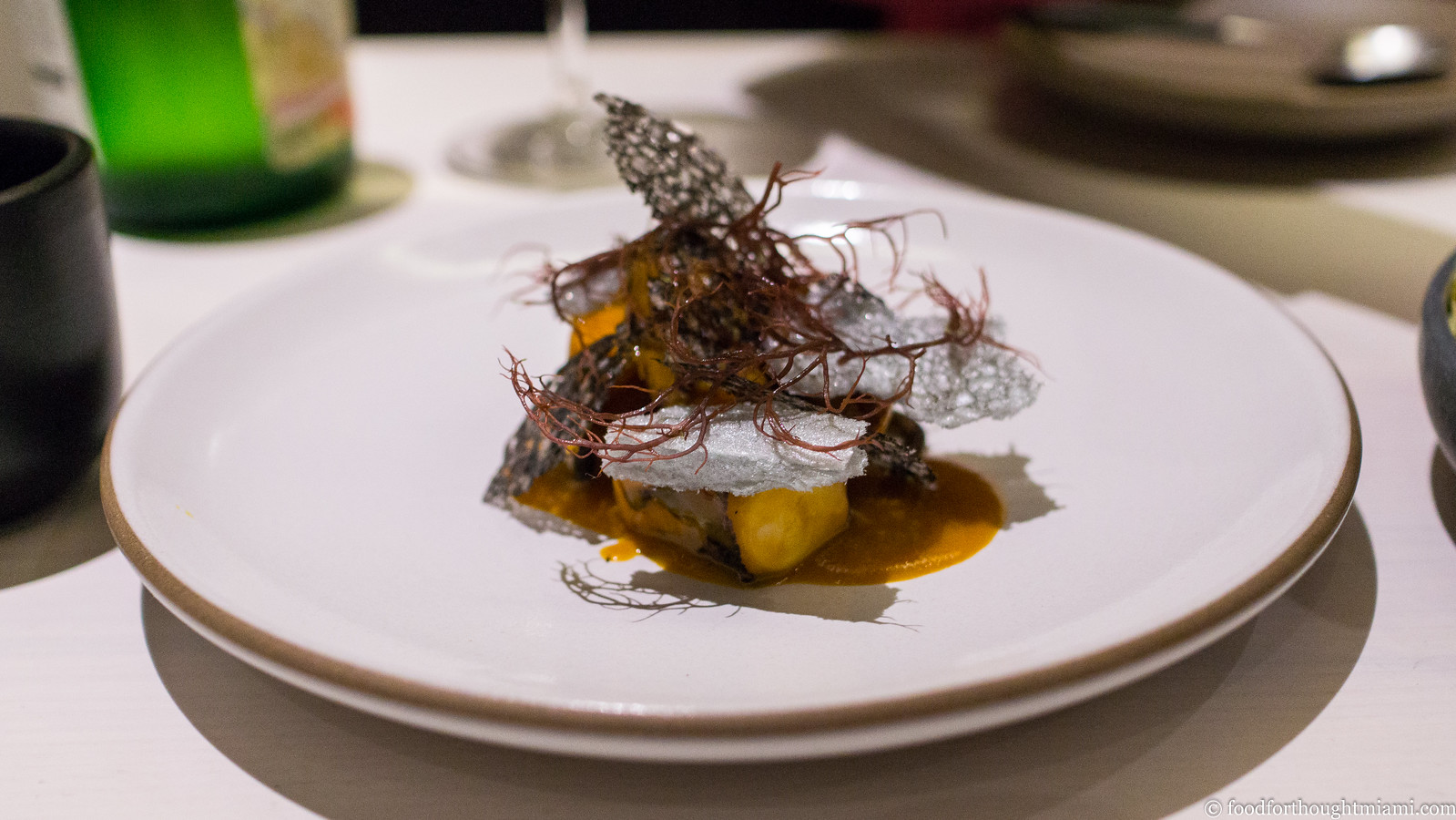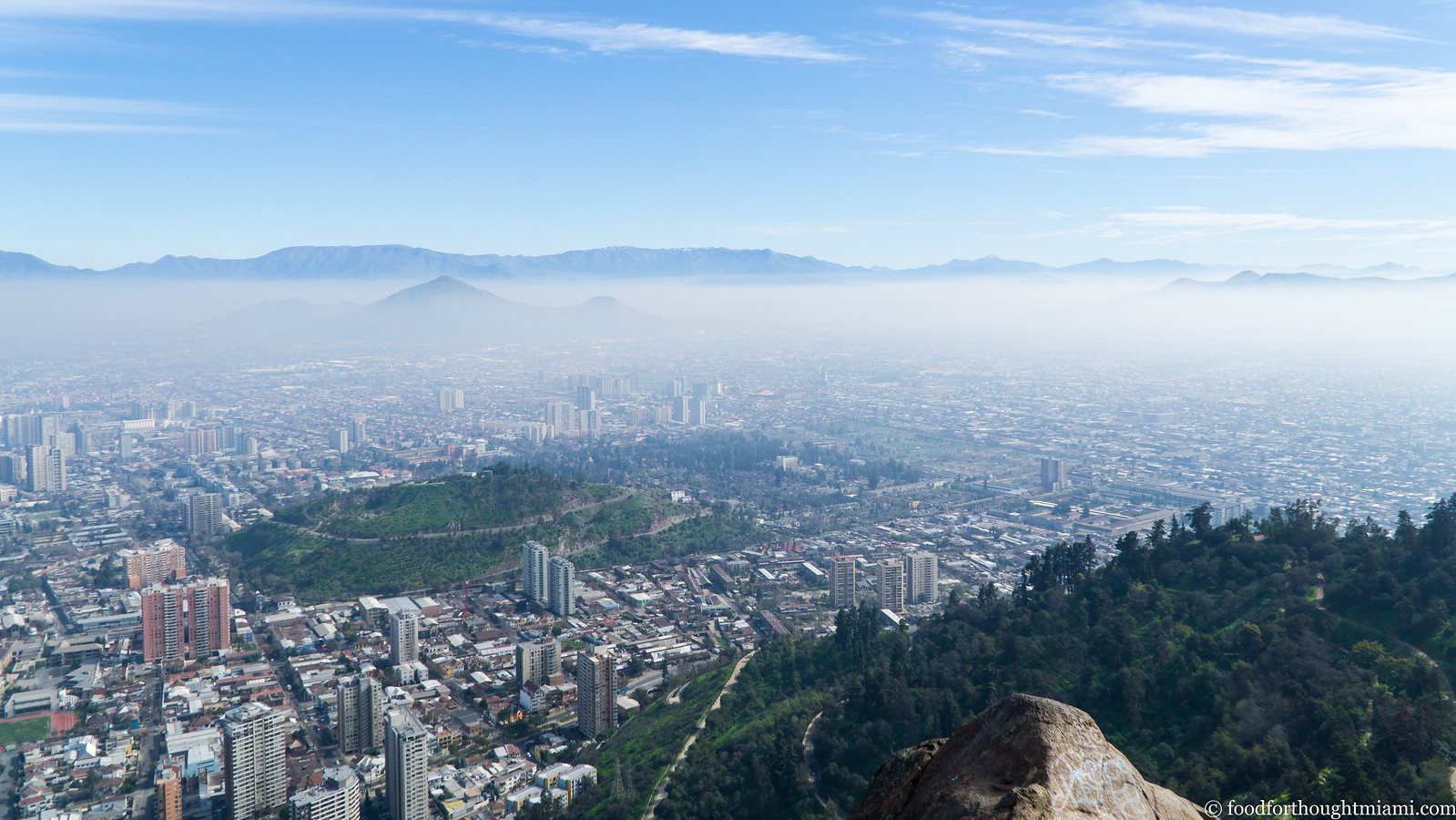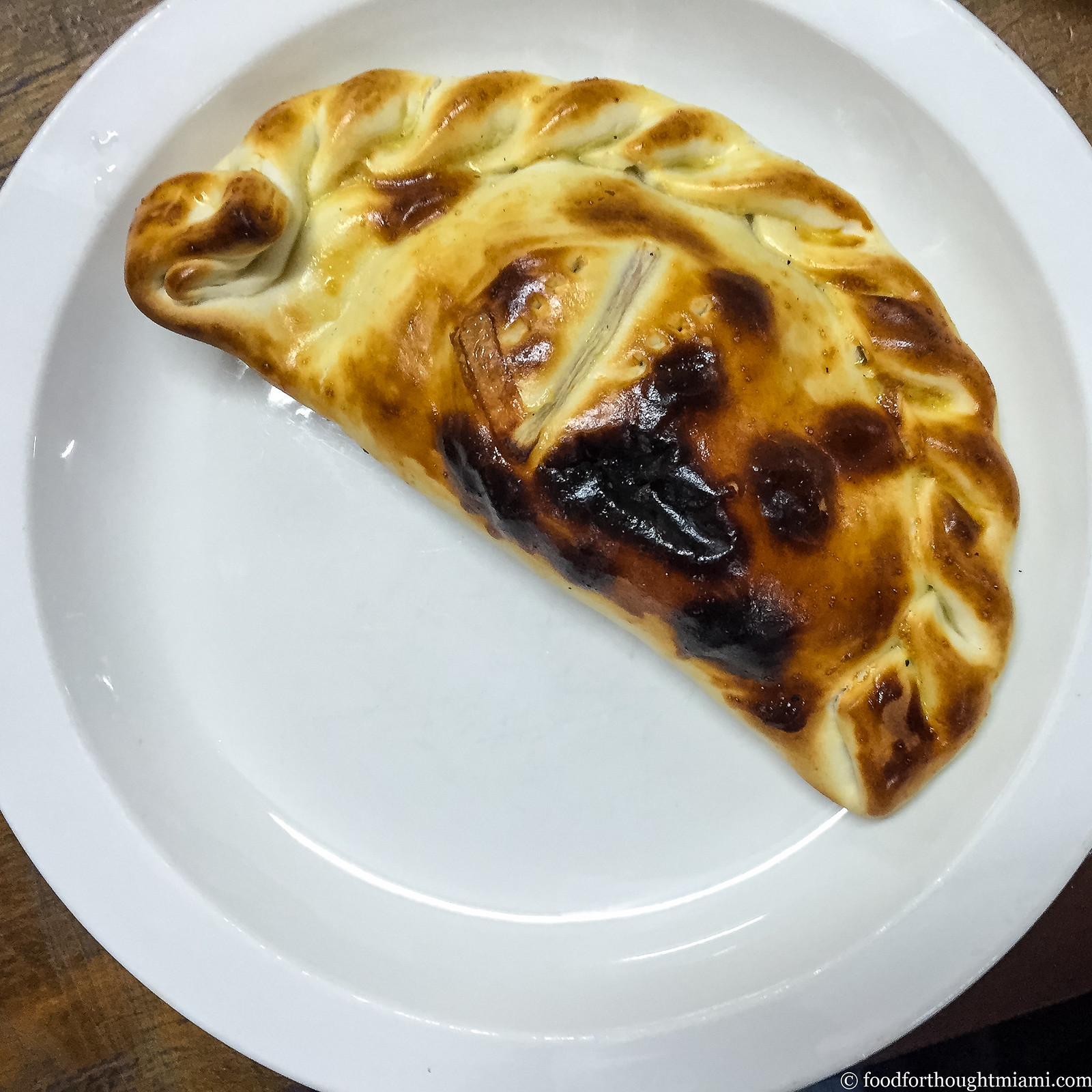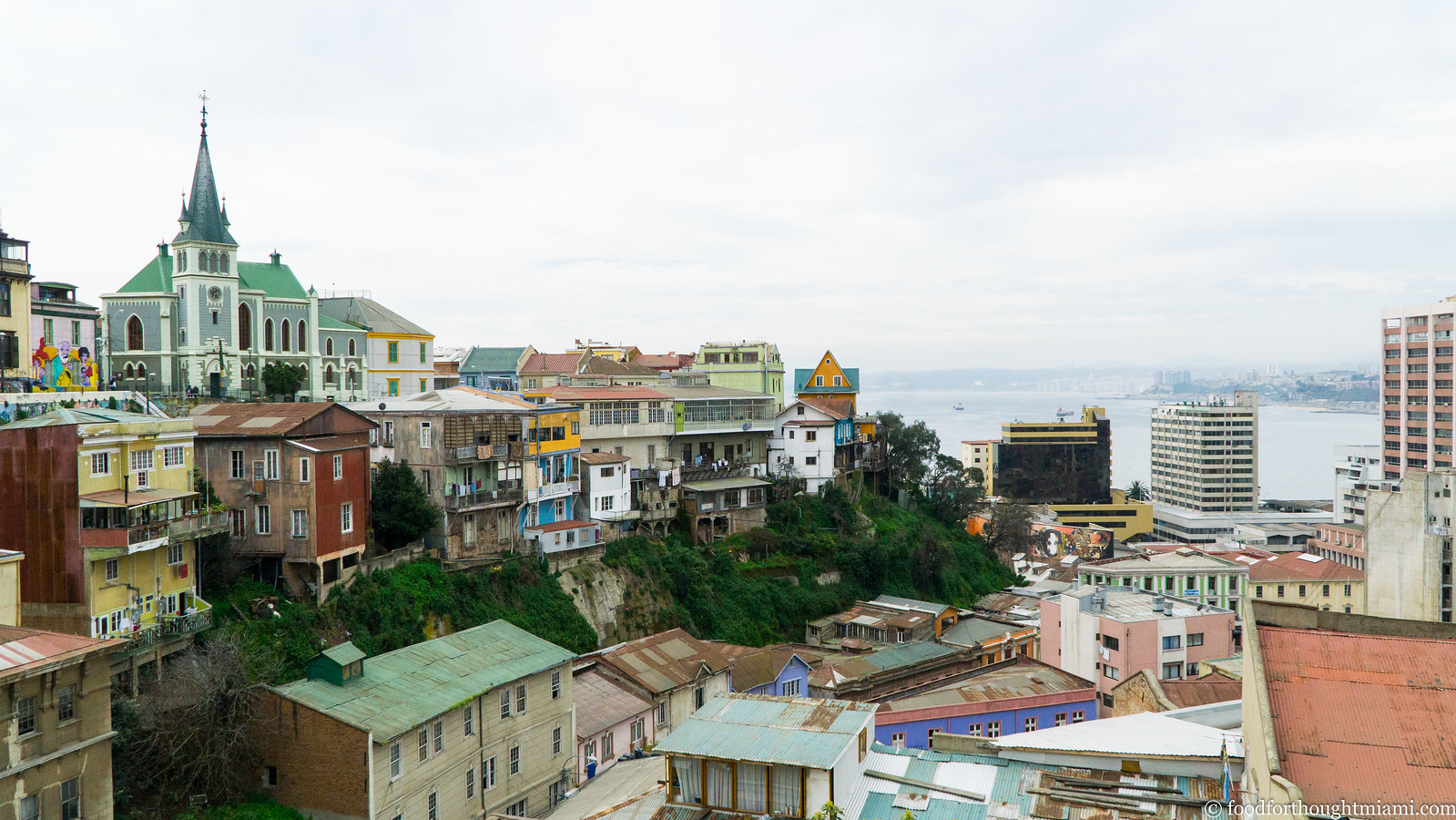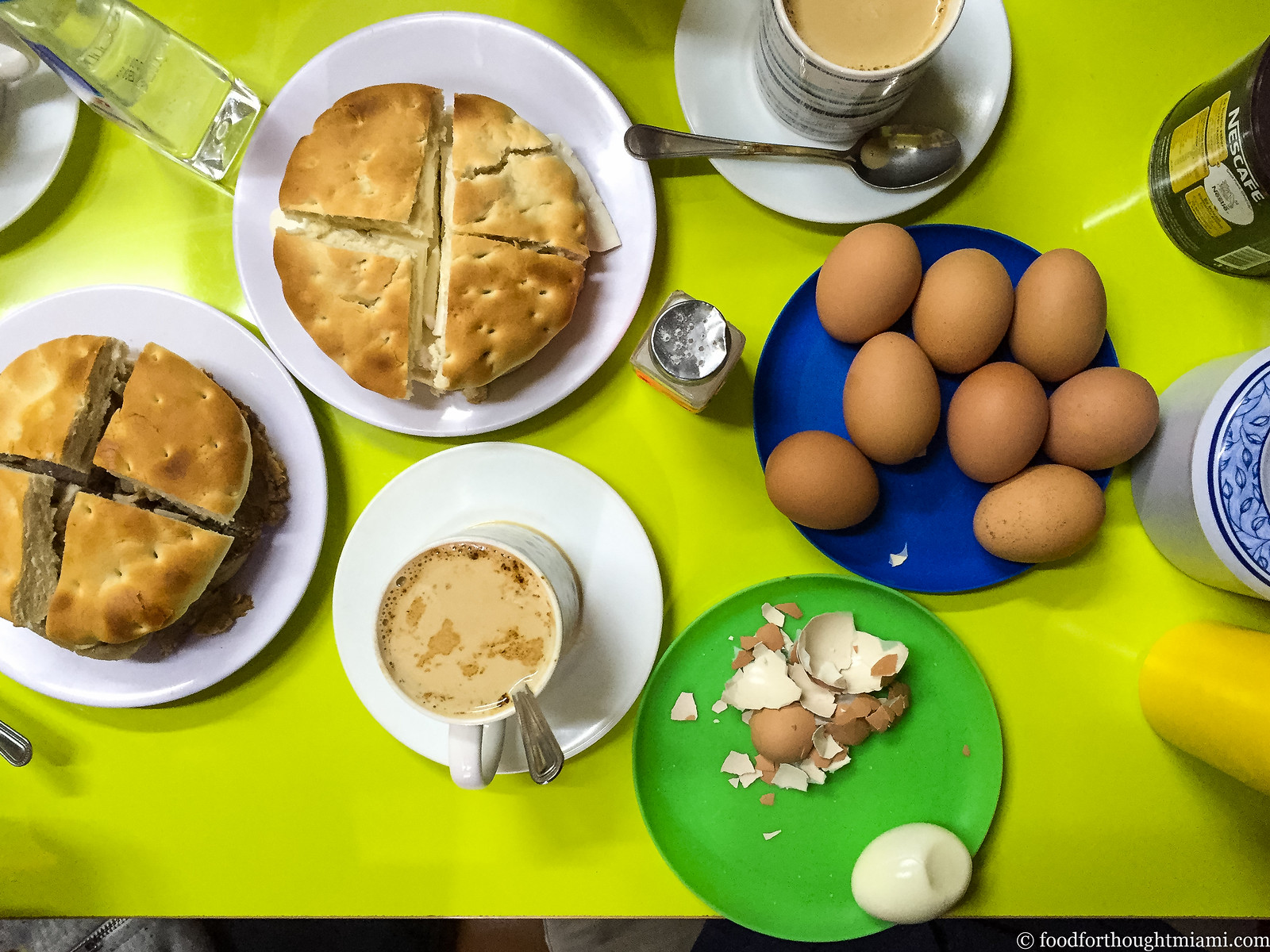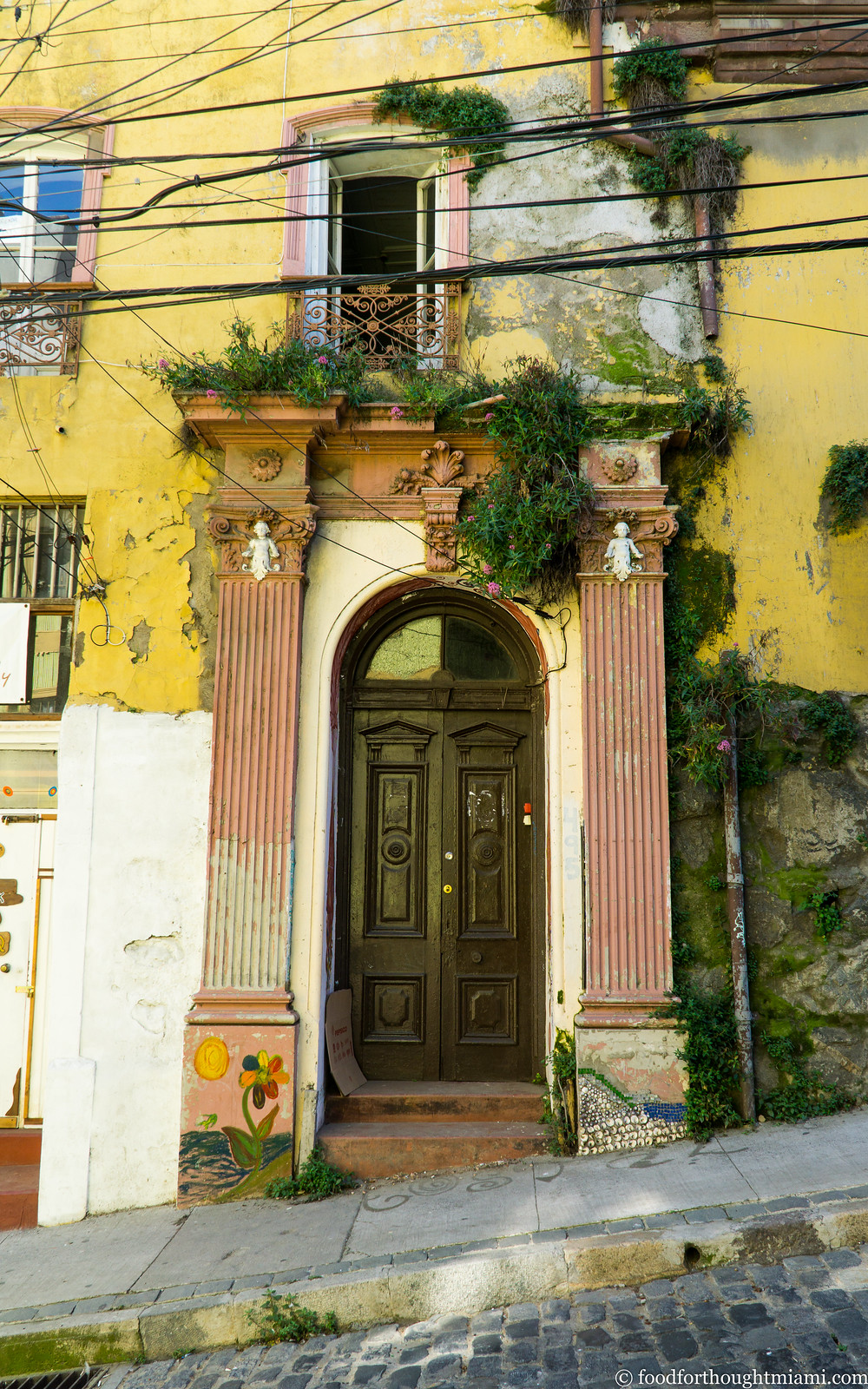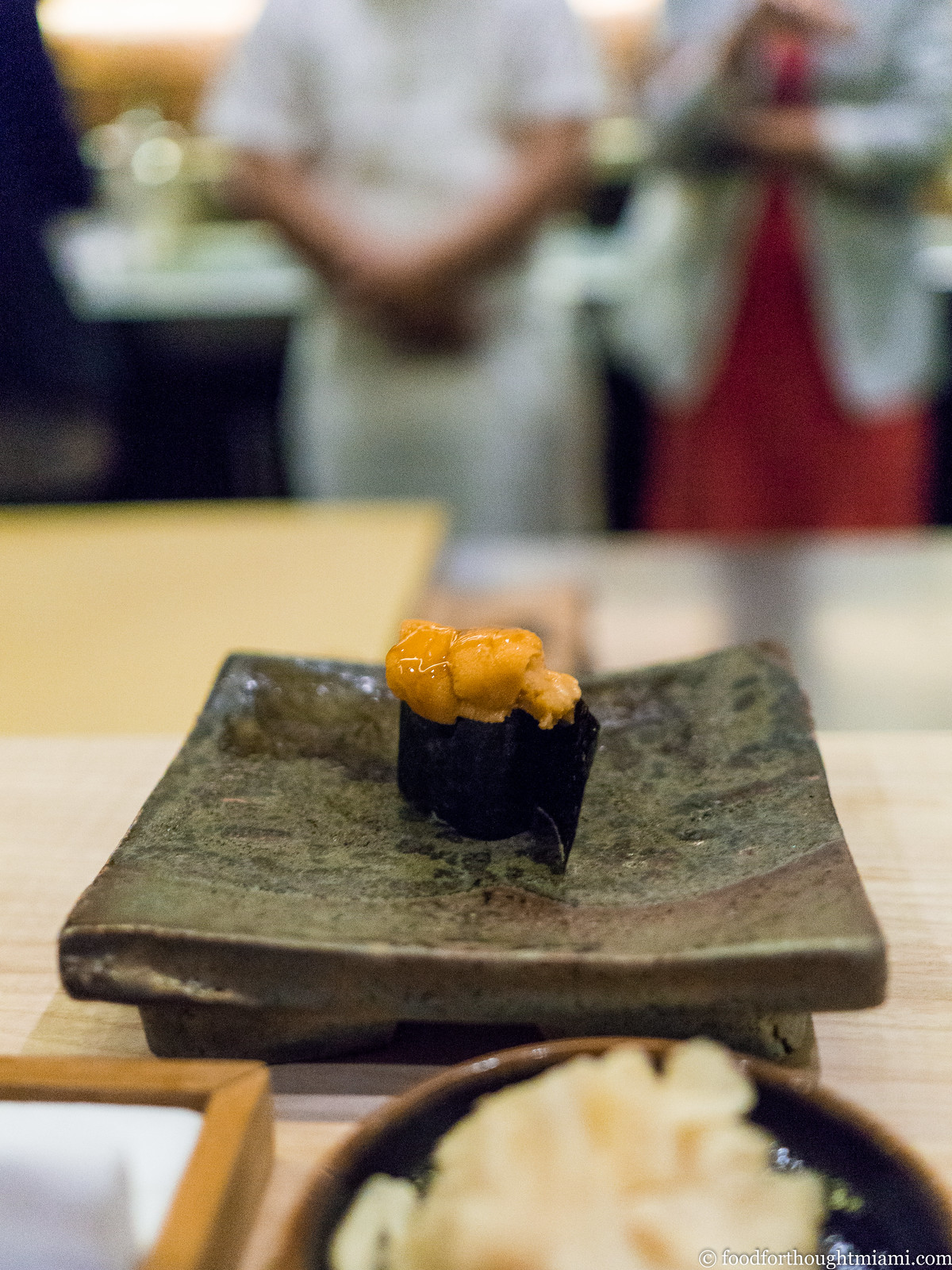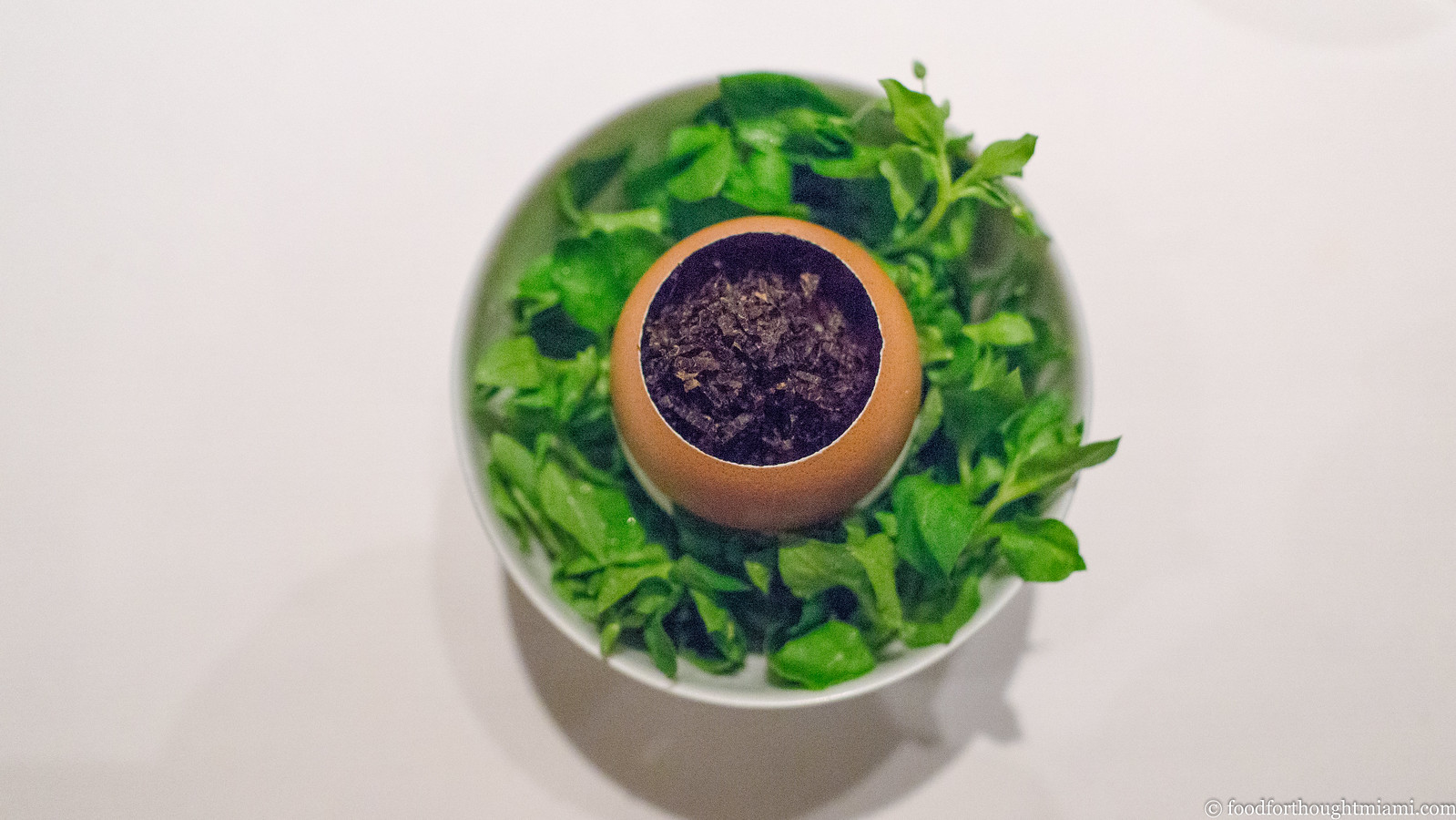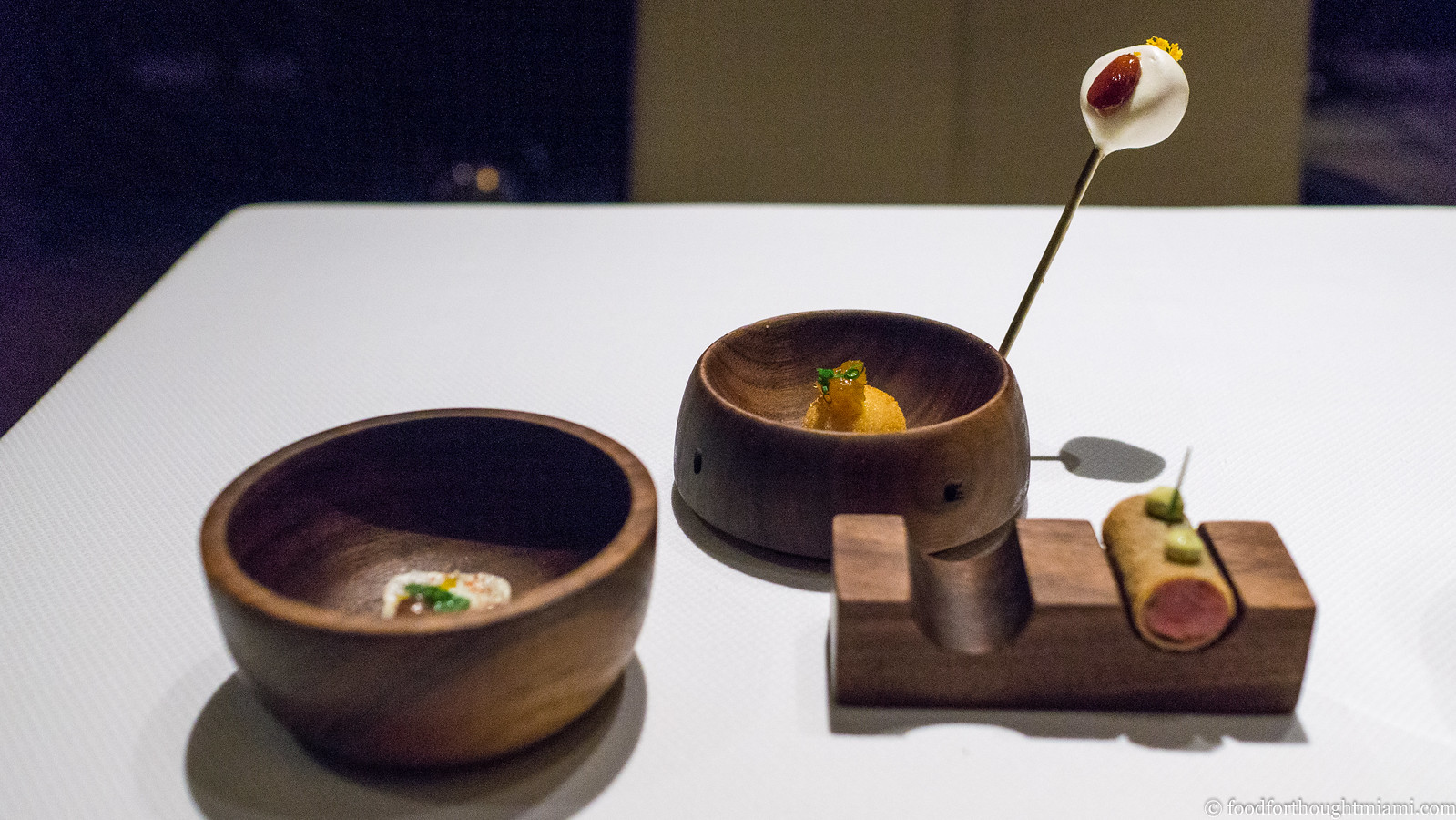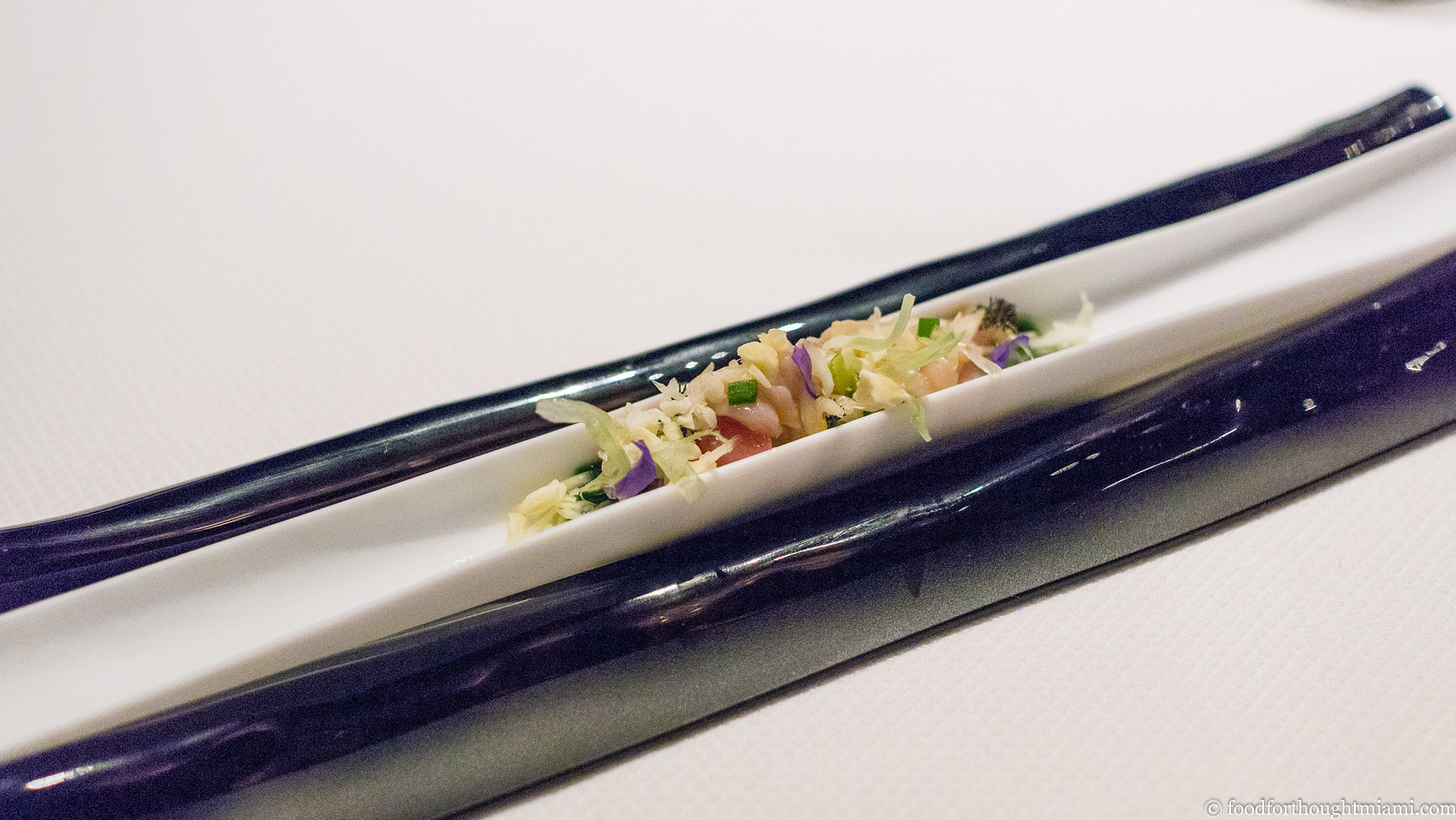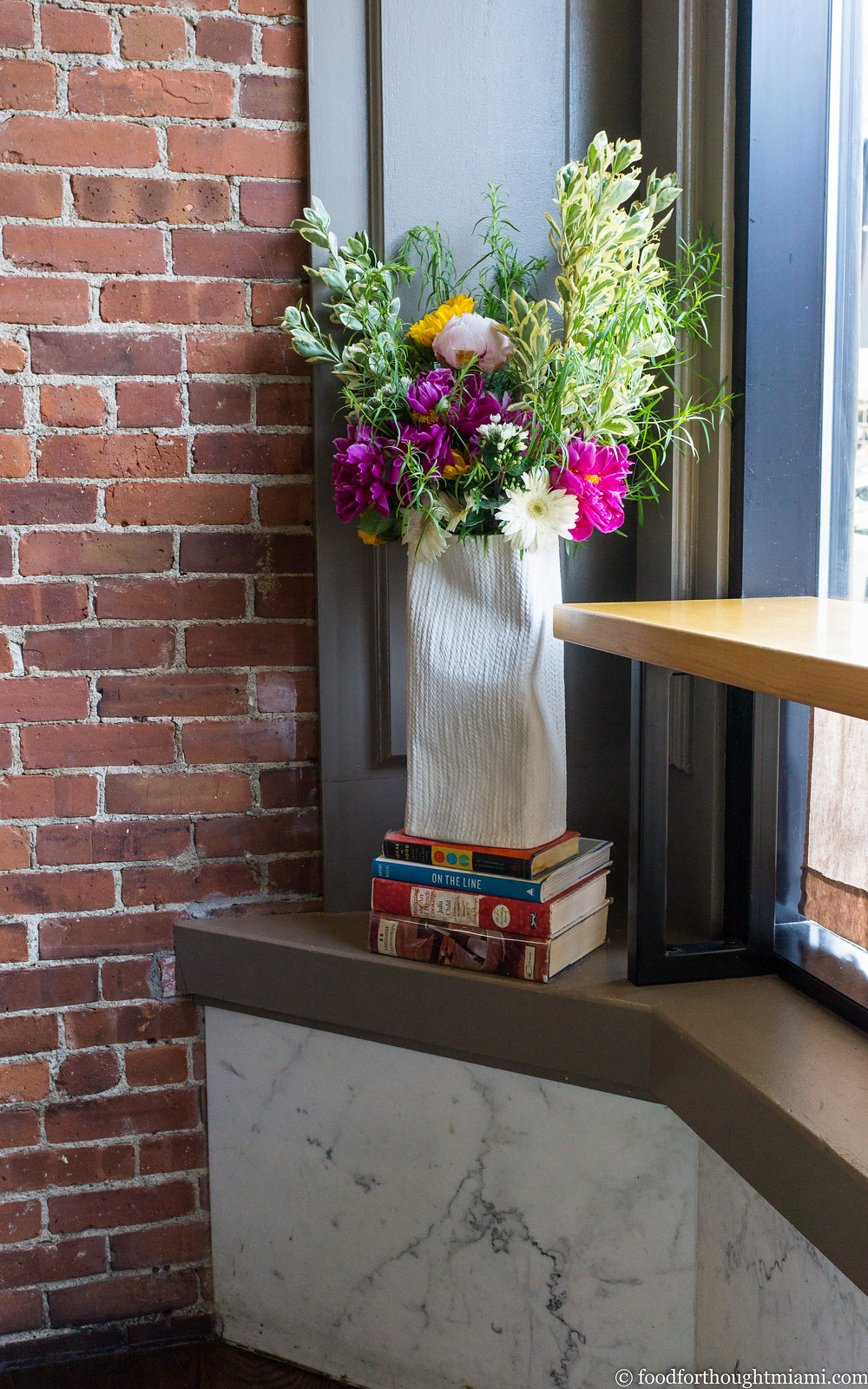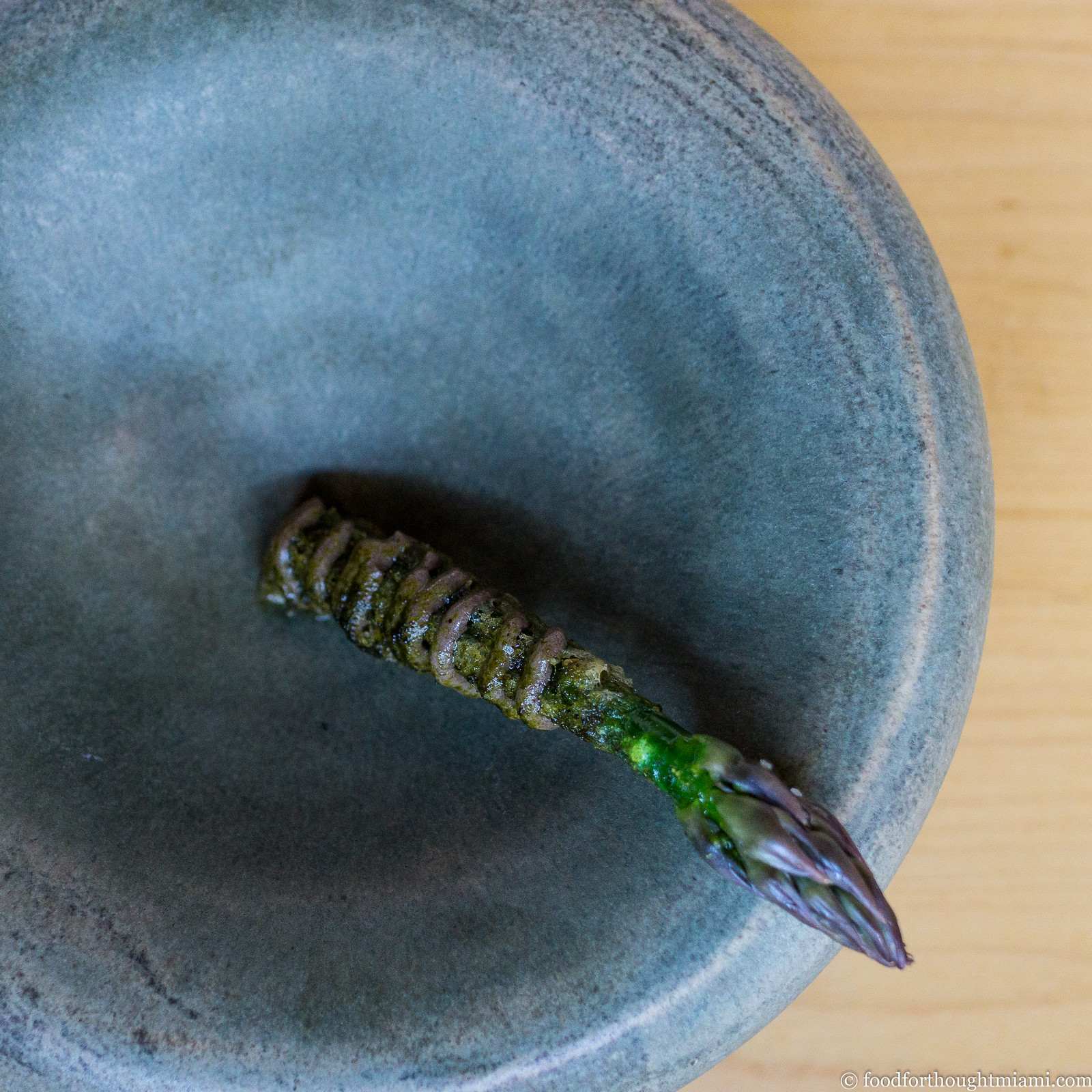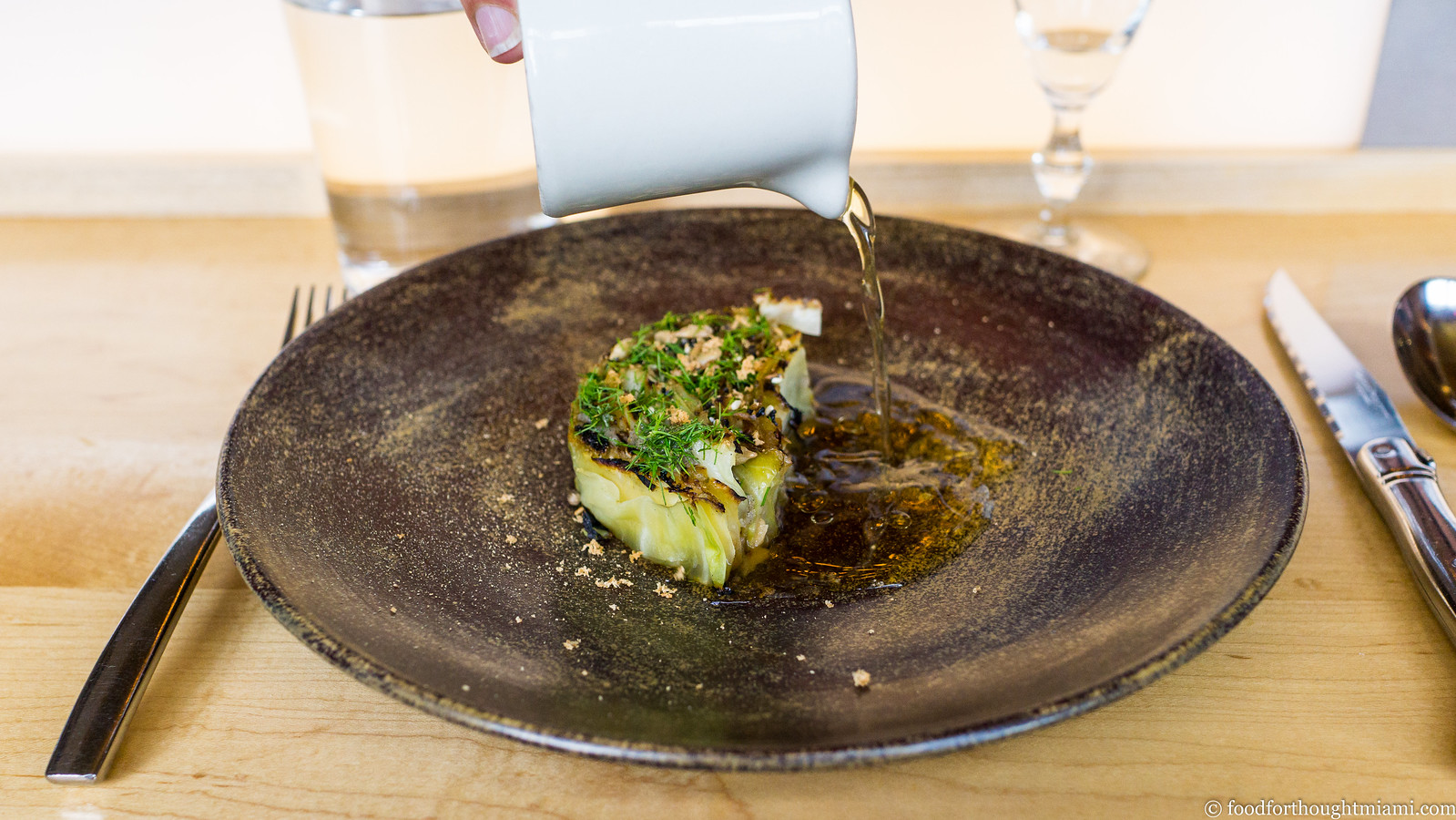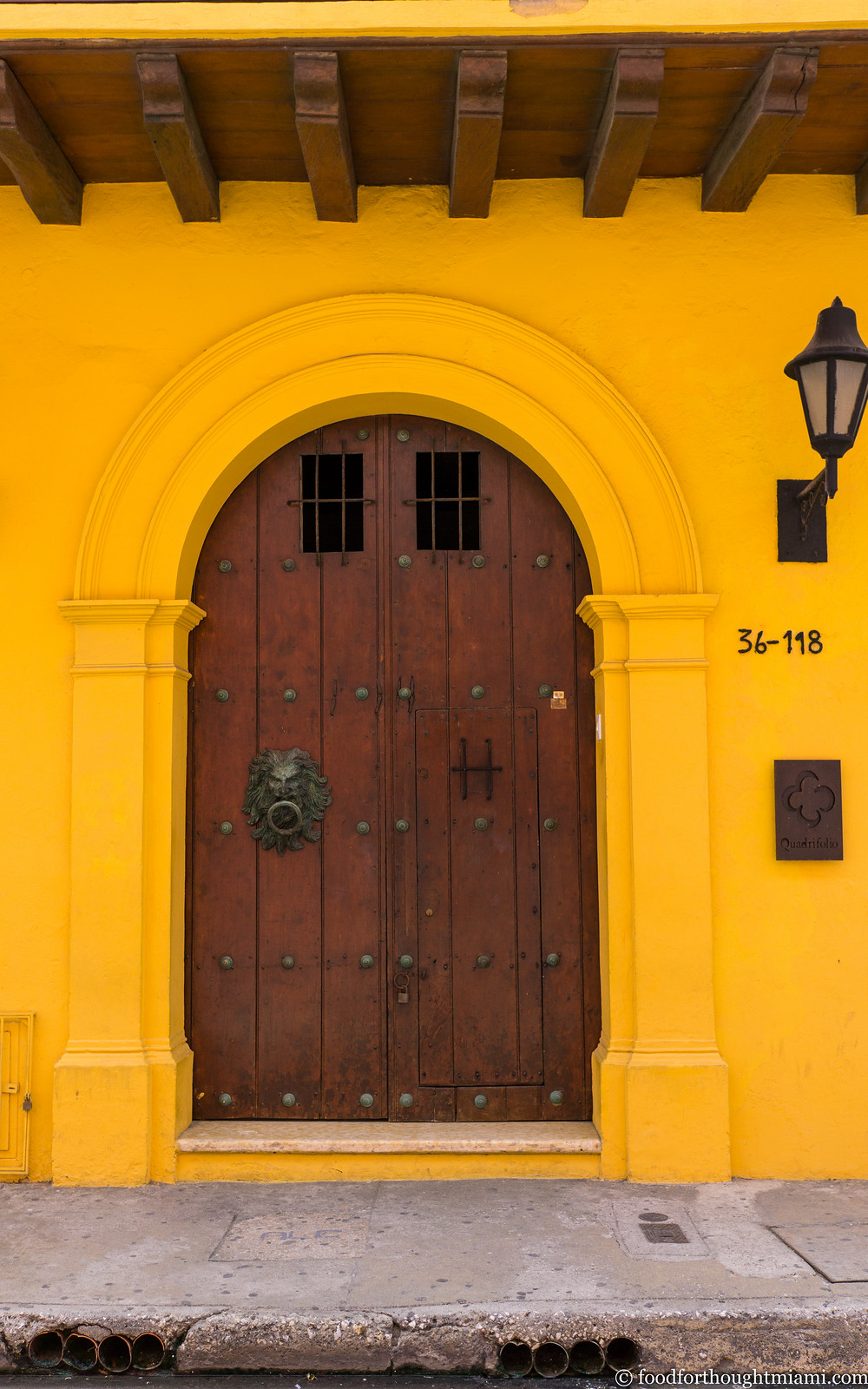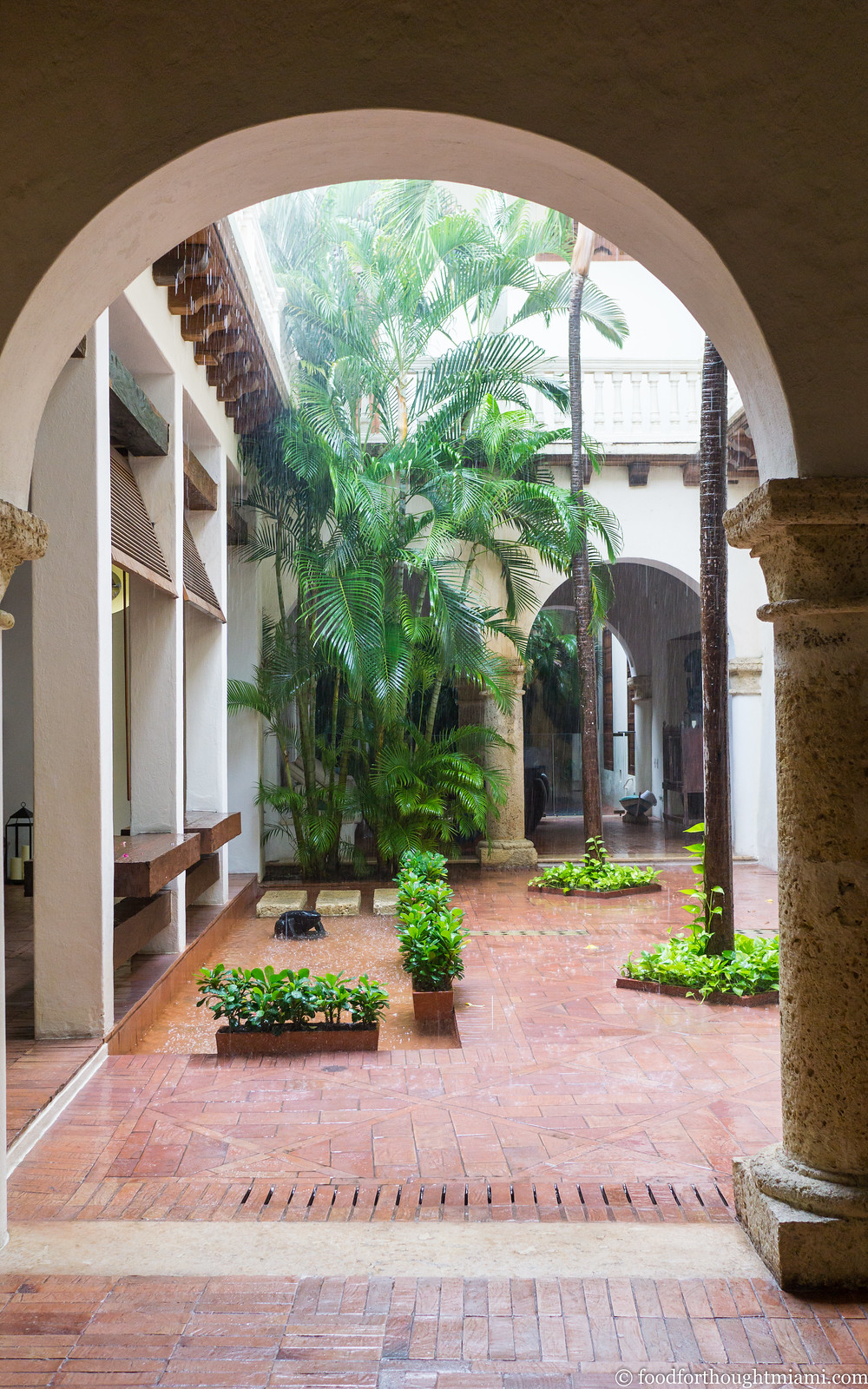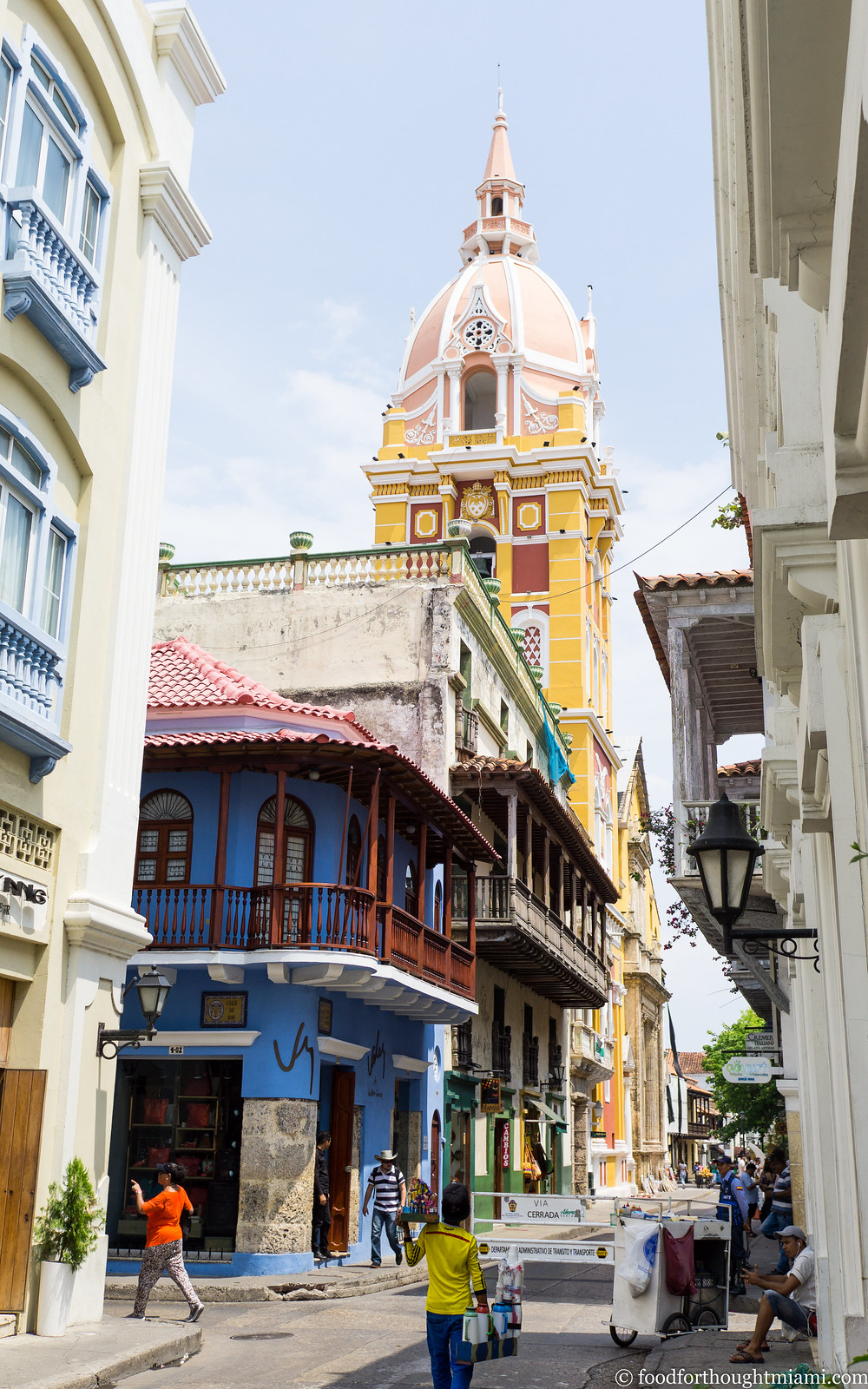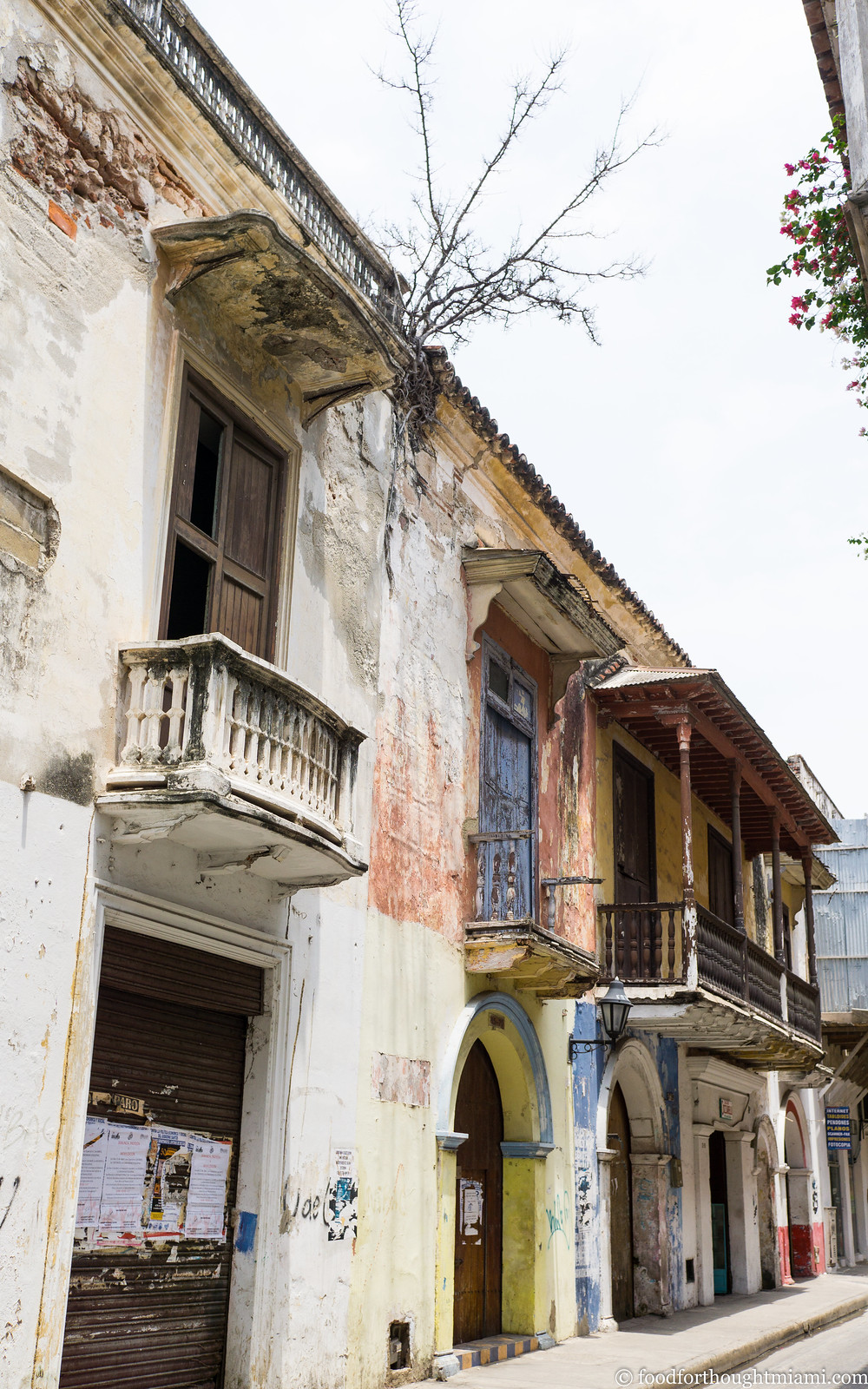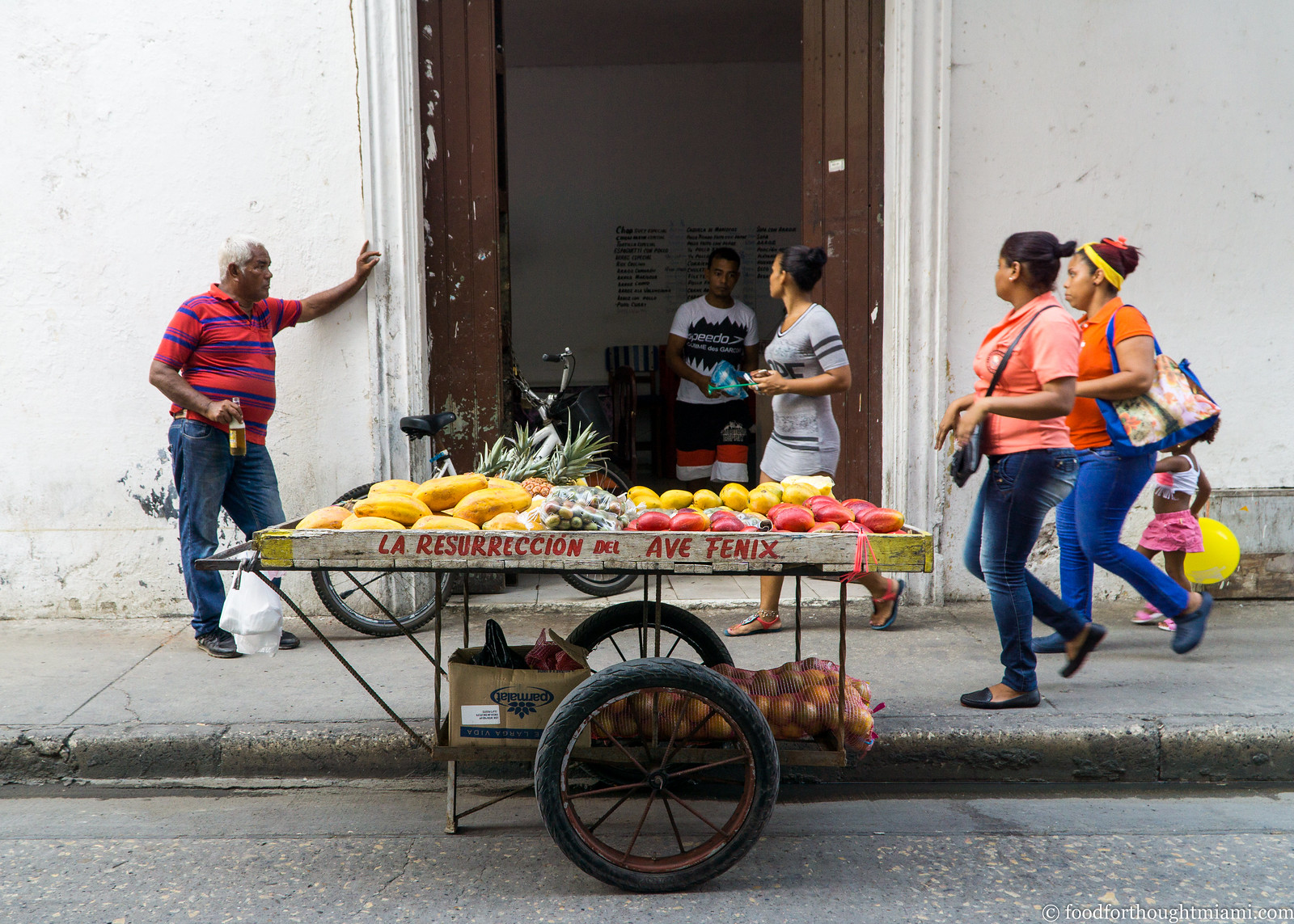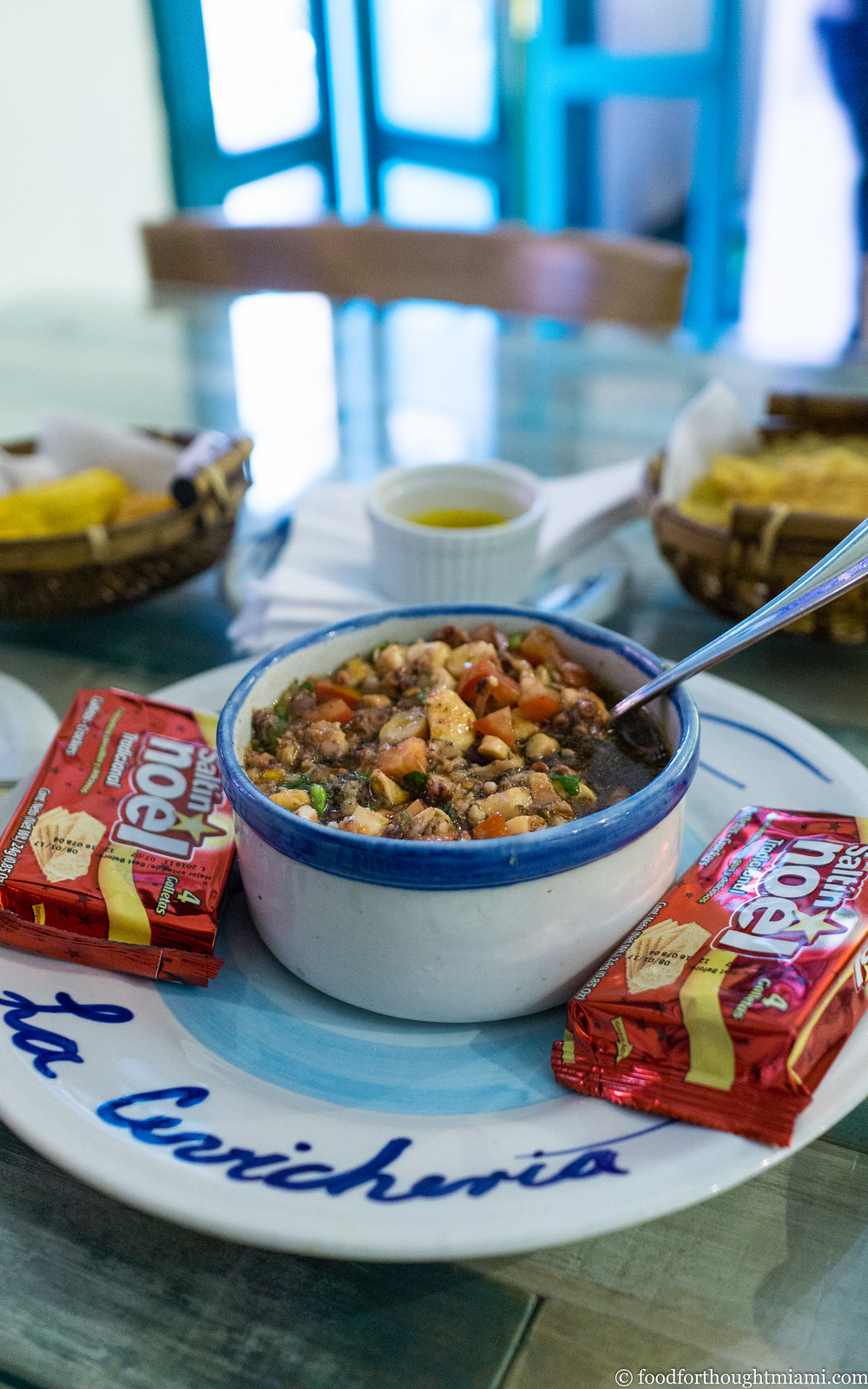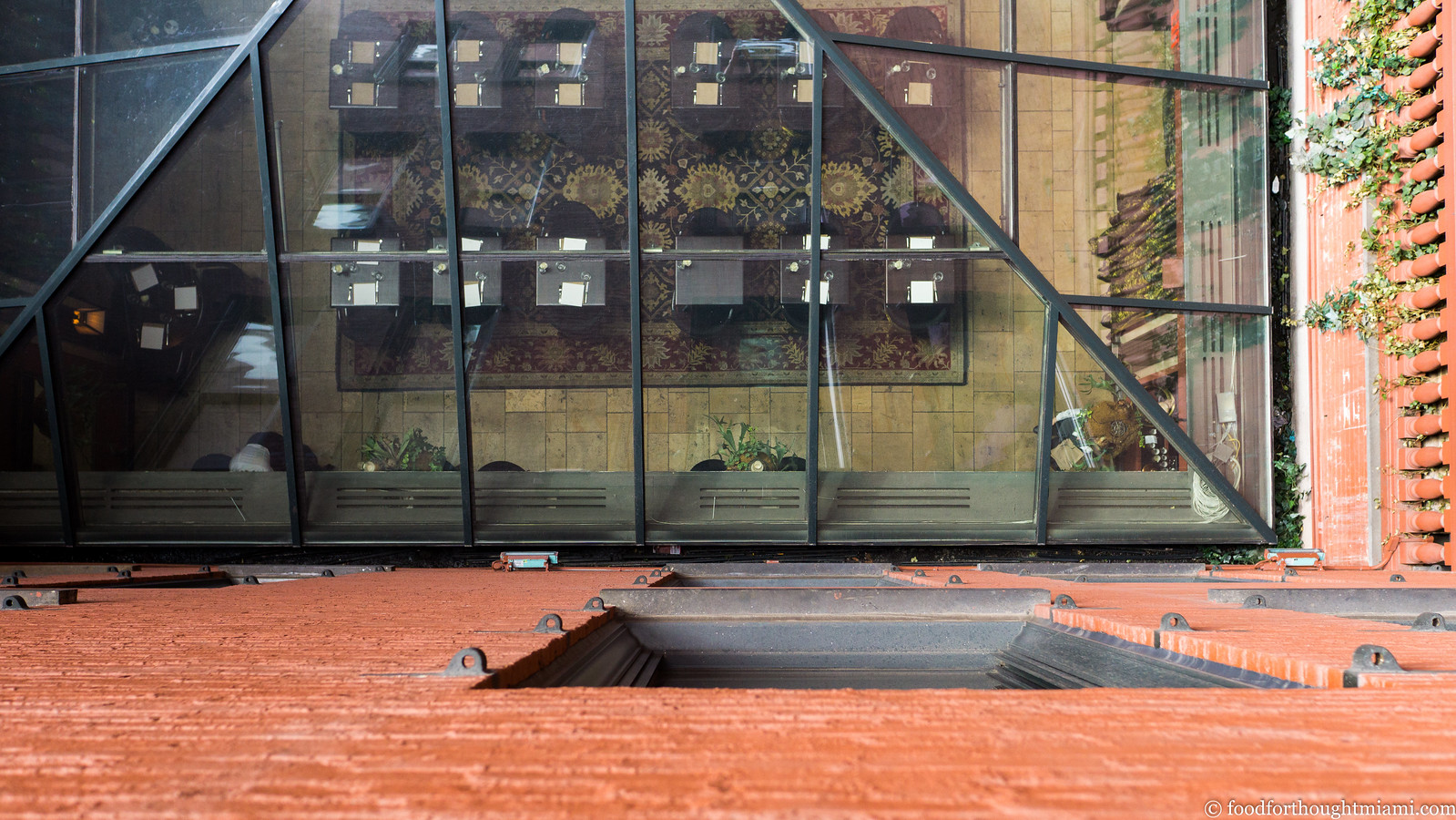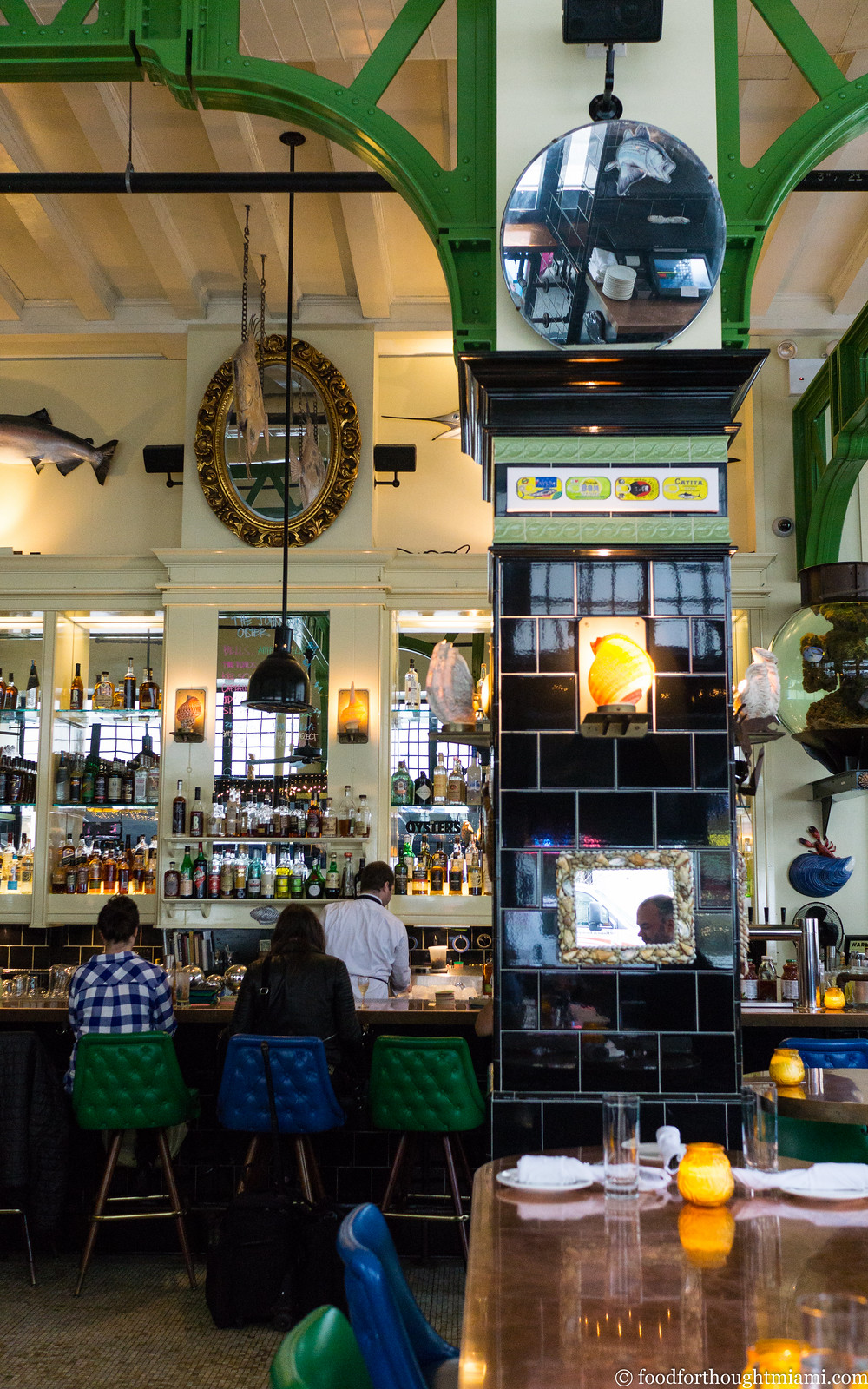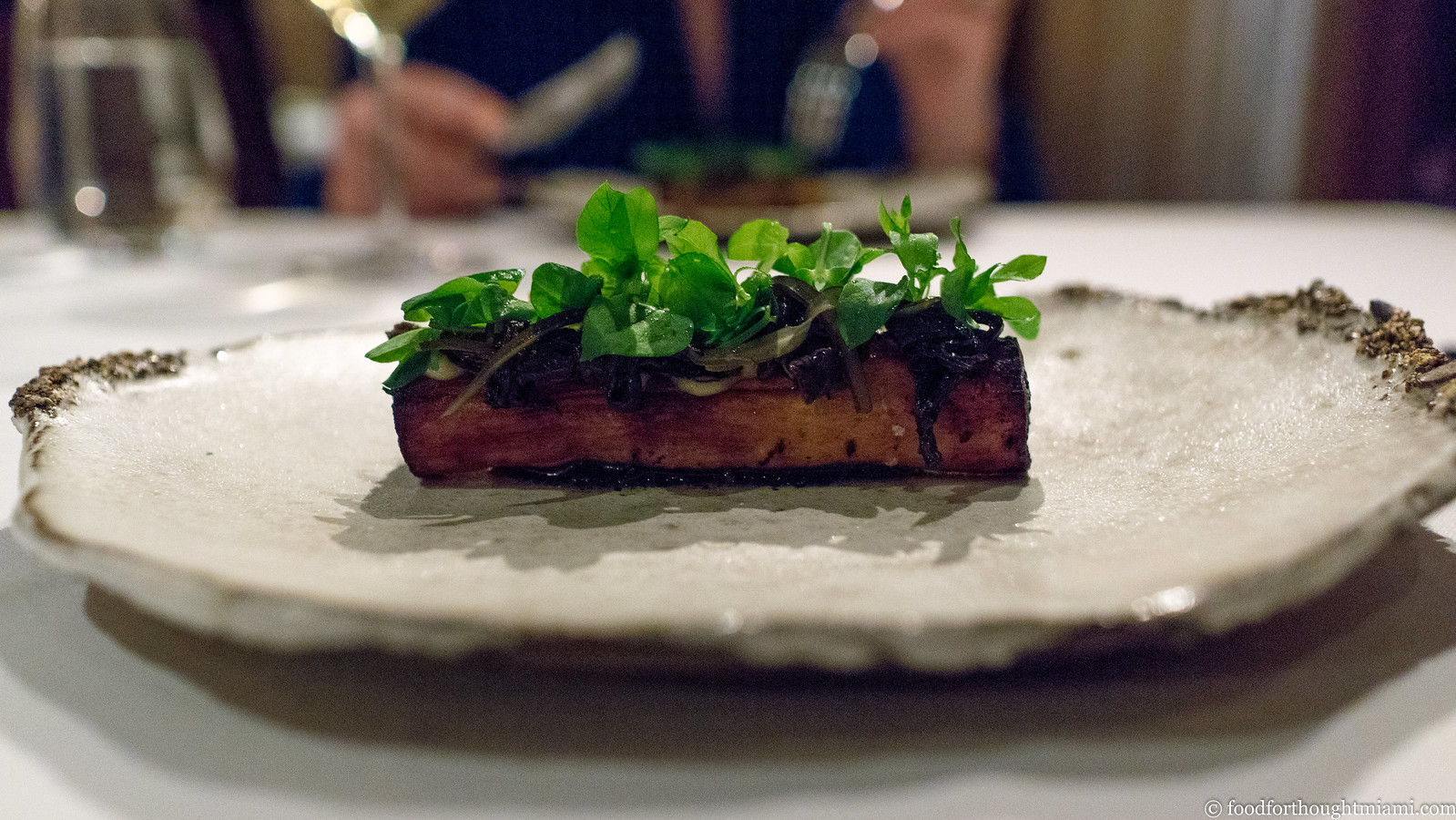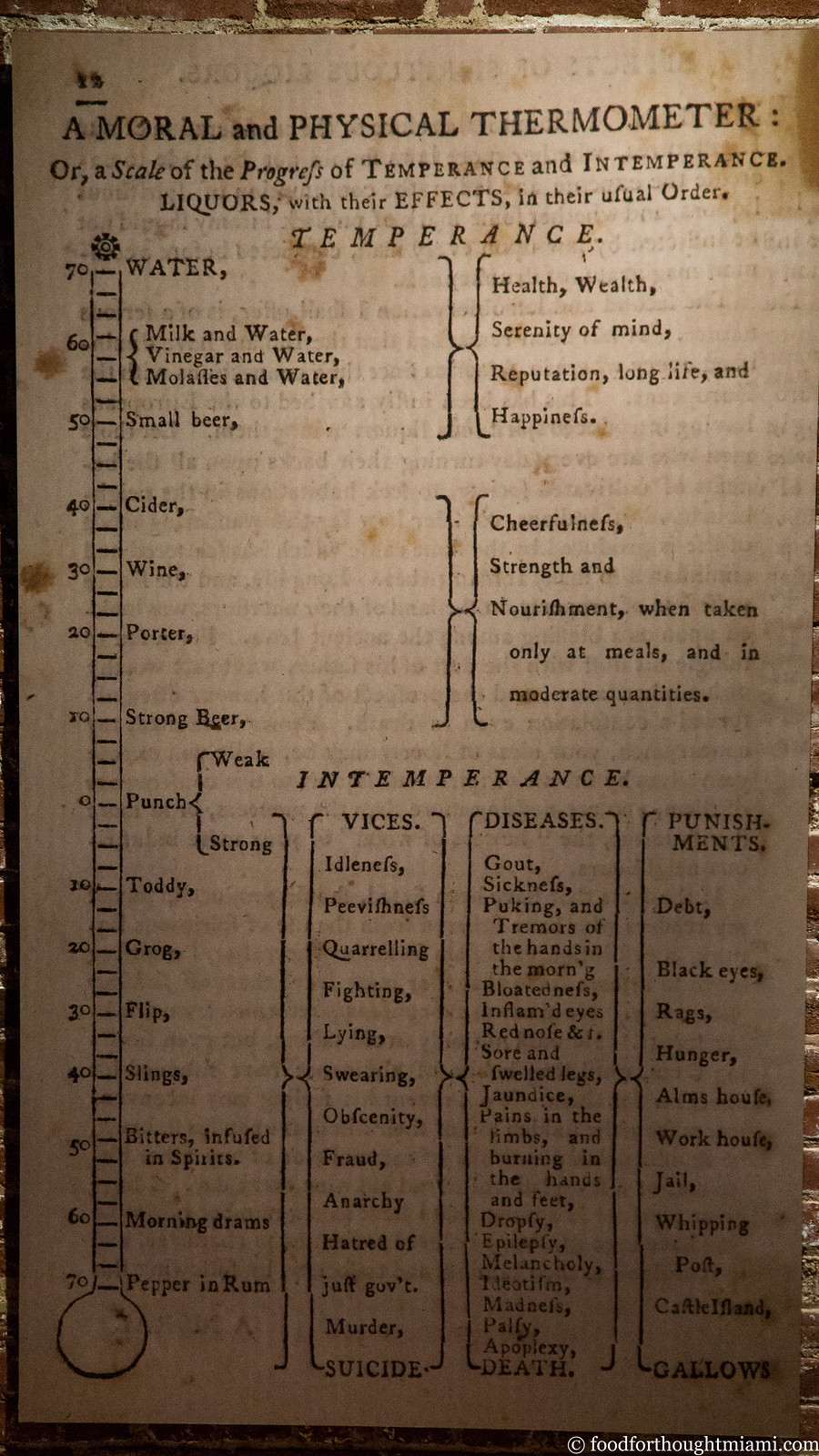Showing posts with label further afield. Show all posts
Showing posts with label further afield. Show all posts
Sunday, November 13, 2016
In Situ - San Francisco
In Situ, the new restaurant in the recently refurbished and reopened San Francisco Museum of Modern Art, is a bundle of contradictions. The chef is Corey Lee, whose tasting-menu flagship, Benu, just retained the three Michelin stars it was first awarded in 2014. But the highly regarded chef didn't create a single recipe for the restaurant. Rather, the menu consists of a rotating selection of other chefs' dishes from all around the world, which the In Situ kitchen sets out to faithfully recreate. In other words, it's a restaurant in the model of an art exhibition, with Lee as the curator.
In this and other ways, including the exhibition catalog-style menu, In Situ clearly advances the notion of chef as artist. But the manner by which it is implemented – with Lee and his crew duplicating the "artists'" creations – undermines the very notions of authorship and uniqueness that are generally thought of as essential to the distinction between "art" and "craft." While Lee is ostensibly in the role of curator and not creator, the lines become blurred: when was the last time you saw a museum curator break out his brushes and hang up his own canvas on the museum wall as the "Mona Lisa"?[1] What you will get here is at best a copy, though it may be a very good one.
Indeed, the very name is a contradiction: "in situ" refers to a site-specific artwork, one that is created for the location. Yet each of the dishes served at In Situ was created for and is usually served in some other restaurant.
All of which is to say this: In Situ is possibly the most thought-provoking restaurant experience I've had in years. But unlike many restaurant experiences that aim to be thought-provoking, this one was also a lot of fun and mostly really delicious.
(You can see all my pictures in this In Situ - San Francisco flick set).
A big part of the fun at In Situ is that the restaurant acts as both Star Trek transporter and Dr. Who time travel TARDIS telephone booth. Here, in one meal, you can sample dishes from thousands of miles away, and even from decades past – some of which may no longer even be available anywhere else.[2]
For instance, the lead-off item on the menu[3] during our visit comes from chef Wylie Dufresne. His restaurant in New York's Lower East Side, wd~50, was a mid-aughts "molecular gastronomy"[4] trendsetter. But I never managed to get there before it closed in 2014.
Yet here are Dufresne's "shrimp grits," a dish which subverts the classic Southern pairing, turning the shrimp themselves into the grits by chopping, cooking, finely grinding, and finally re-warming them with powdered freeze-dried corn, then garnishing with pickled jalapeños and a bright orange shrimp shell oil.
If I'm to be honest, one of the reasons I never ate at wd~50 is that I wasn't convinced I would have enjoyed an entire meal there: the place often gave me the impression that form was being elevated over substance, creativity over flavor. But that's another of the interesting things about In Situ: it's a chance to sample a chef's cooking (at least vicariously through the medium of Lee and crew), without the commitment of a full meal. Turns out, this dish was excellent: intense crustacean flavor, combined with a nostalgic creamy, nubby grits texture. Perhaps I misjudged. But In Situ offers a taste of what I missed.
We were in Kyoto a couple years ago, but did not go to Gion Sasaki, a kaiseki style restaurant that is a notoriously difficult reservation. So here is another "missed opportunity" dish. Tender, meaty chicken thighs are glazed with a delicate teriyaki sauce (not the gloppy syrupy stuff we get here, but a fine calibration of salty, tangy and sweet); concealed beneath them is a wobbly "onsen" egg (probably cooked in an immersion circulator rather than the traditional hot spring), mounted in a bed of crunchy lettuce, and dusted with tingly sansho pepper. It's Sasaki's version of "oyako," i.e. "parent and child" (chicken and egg), and it's superficially simple but elegantly balanced.
One of the challenges In Situ faces is finding dishes that can be replicated without access to all of the ingredients used by chefs whose restaurants may be thousands of miles away. Virgilio Martinez's cooking at Central in Lima, Peru is indelibly tied to indigenous products, many of which are found nowhere else in the world. So when he chose a dish for the In Situ menu, he had to do something that would "travel well." (More interesting tidbits in this conversation between Martinez and Lee captured by Lucky Peach).
His "Octopus and the Coral" is the result: plump octopus tentacles basted in a spicy rocoto chile paste, hidden beneath shards of silver savory meringues, dark grey rice crackers, and tufts of red seaweed, meant to appear like an octopus crouching within a coral-covered rock beneath the sea. It was a good dish, though not nearly as interesting as several dishes Martinez prepared for a dinner at Alter restaurant in Miami earlier this year.
(continued ...)
Thursday, October 6, 2016
Boragó | Santiago, Chile
As I mentioned in Part 1 of my Chile travelogue, before we'd decided to visit Chile, I knew very little about the country's food. In fact, there was only one restaurant I could name: Boragó. Boragó's chef, Rodolfo Guzman, opened the restaurant in 2007 after taking an interesting path into the kitchen: he studied chemical engineering, went to culinary school when a broken ankle ended a career as a professional water-skier, then spent time working at Andoni Luis Aduriz's restaurant Mugaritz in Spain's Basque Country before returning home to open his own place.
It took several years, but eventually, Boragó drew the attention of the International Dining Mafia: it now ranks No. 37 on the "World's 50 Best Restaurants" list, and No. 4 among "Latin America's 50 Best Restaurants" – whatever the heck those rankings mean. I think the whole concept of these numerical rankings is goofy, before even addressing the many other valid criticisms lodged against the "50 Best" list. But it can still be a useful tool for finding restaurants, particularly in regions that don't get as much critical attention otherwise.
One of those criticisms is that the restaurants on the list tend to have a certain sameness to them: high-end, expensive tasting menus, chasing the same fashionable ingredient trends, plated according to the same aesthetic. On the surface, Boragó might seem to fall into that camp: another pricey, tasting-menu place. But from its inception, Boragó set out to explore the largely unheralded ingredients and cooking methods of Chile's native peoples, and it dives deep. When you order the "Endemíca" tasting menu at Boragó, you are given not a menu, but a map: literally, a map of Chile, stretching along the Pacific coast of South America from the northern desert of Atacama to the Tierra del Fuego in the south, the last stop before Antarctica.
My recap here reconstructs what I have gathered about our meal from the contemporaneous descriptions as they were presented (which came at us in a mix of English and sometimes rapid-fire Spanish, depending on who brought the dish to the table), Instagram posts from Chef Guzman, and some independent research after the fact.
(You can see all my pictures in this Boragó - Santiago, Chile flickr set).
A "chilenito" is usually a sweet layered cookie like an alfajor filled with manjar (milk caramel, a/k/a dulce de leche); but here, as the first bite of the meal, it took the form of a thin, crisp cracker layered with creme fraiche, tart sea strawberry, and as the top layer, a preserved edible leaf. Sea strawberry would be the first of many ingredients I'd never encountered before. Called "frutilla de mar" in Chile, it's a coastal succulent with a tangy-sweet flavor that is indeed similar to strawberry, with a hint of salt.[1]
Even with after-the-fact googling, I couldn't figure out why this dish was called "chuchum" on the menu we received after the dinner. Served balanced on some branches, it was like a miniature tart in a potato shell with layers of locos (Chilean abalone), creme fraiche and membrillo.
The next course was served in a wide ceramic bowl, which was brought to the table wrapped in cloth. Inside the bowl was a "chupe" – a stew – of wild mushrooms from Quintay, a town on the Pacific coast due west from Santiago. At the base of the bowl was a thick purée of the richly flavored mushrooms, which had been hung over embers for five hours. Arranged above the purée were several pickled and dehydrated leaves. The server finished the dish by pouring into the bowl whey from pajarito (kefir?) yogurt which had been infused with eucalyptus. This was like the flavors of a forest, concentrated in one bowl: the earthy, meaty mushrooms, their flavors deepened over the smoke; the pickled leaves; the woodsy scent of eucalyptus, all of it pulled together in the lactic tang of the whey. It was a unique and memorable dish.
(continued ...)
It took several years, but eventually, Boragó drew the attention of the International Dining Mafia: it now ranks No. 37 on the "World's 50 Best Restaurants" list, and No. 4 among "Latin America's 50 Best Restaurants" – whatever the heck those rankings mean. I think the whole concept of these numerical rankings is goofy, before even addressing the many other valid criticisms lodged against the "50 Best" list. But it can still be a useful tool for finding restaurants, particularly in regions that don't get as much critical attention otherwise.
One of those criticisms is that the restaurants on the list tend to have a certain sameness to them: high-end, expensive tasting menus, chasing the same fashionable ingredient trends, plated according to the same aesthetic. On the surface, Boragó might seem to fall into that camp: another pricey, tasting-menu place. But from its inception, Boragó set out to explore the largely unheralded ingredients and cooking methods of Chile's native peoples, and it dives deep. When you order the "Endemíca" tasting menu at Boragó, you are given not a menu, but a map: literally, a map of Chile, stretching along the Pacific coast of South America from the northern desert of Atacama to the Tierra del Fuego in the south, the last stop before Antarctica.
My recap here reconstructs what I have gathered about our meal from the contemporaneous descriptions as they were presented (which came at us in a mix of English and sometimes rapid-fire Spanish, depending on who brought the dish to the table), Instagram posts from Chef Guzman, and some independent research after the fact.
(You can see all my pictures in this Boragó - Santiago, Chile flickr set).
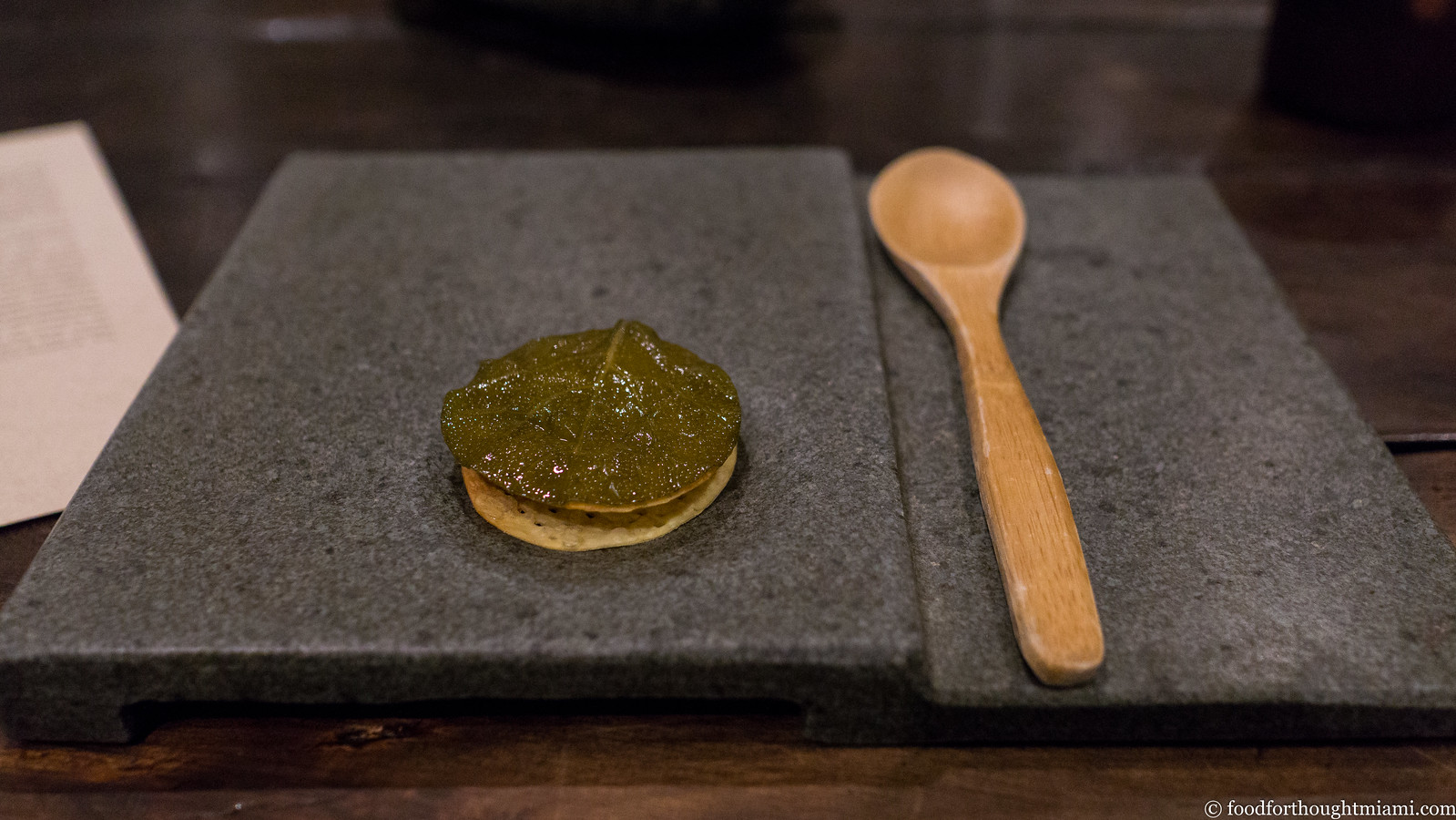 |
| chilenito |
 |
| chuchum |
 |
| chupe de hongos de Quintay |
(continued ...)
Monday, September 19, 2016
travelogue: Chile, Part 2 - Santiago
After a day in Valparaiso and a quick pass through the Casablanca Valley wine country (more on that in Part 1 of my Chile travelogue), we were back in Santiago for a couple days. It is a big, sprawling city, which became more manageable as we got a sense of its neighborhoods: the relatively quiet, low-scale, Barrio Lastarria, whose European architecture reminded me of San Sebastian, Spain; the funky, bohemian Barrio Bellavista; the bustling business district around the Palacio de la Moneda; the towering high-rises and shiny new shopping malls of Providencia; the über-posh, almost Beverly Hills-like Vitacura neighborhood where Boragó restaurant resides; the bucolic stretch of shops and cafés in the Barrio Italia.
We made our home base at the Lastarria Boutique Hotel, a really nice modern refurbishment of a big 1920's house on a Lastarria side street. Most of the high-end chain hotels are in Providencia or nearby Las Condes, but we liked this location: not as generically big-city, closer to the museums, and a ten-minute walk through Bellavista to the Parque Metropolitano which surrounds Cerro San Cristóbal.
After checking in and dropping our bags, we made our way over to the Plaza de Armas – the original city center. The plaza was packed: with entertainers hustling for tips, with crowds cheering them on, with merchants set up along the street, and with – well, a grocery cart being pushed by a couple Peruvian guys, filled with an odd assortment of stuffed animals and no less than four dogs, all of whom seemed perfectly happy with the arrangement.
Many Santiago restaurants are closed on Sundays, but we found a spot along Calle Monjitas which had an assortment of different empanadas all made and baked in-house, including this one stuffed with shrimp and cheese.
Nearby is the Museo Chileno de Arte Precolombino, which houses a great collection of pre-Columbian artworks and artifacts. One floor displays items from the different regions and cultures of Chile, like this cat-faced bowl made by the Diaguitas peoples, dating from around 1,000 A.D. Another floor more broadly covers most of South and Central America and the Caribbean. It's a well-organized exhibition that gave history and context to our visit to this region.
For dinner, we met up with a friend of Mrs. F and her family at a place called Las Cabras. Though it's right next to the gaudy Costanera Center, a shopping mall-office building complex that includes the tallest building in Latin America, Las Cabras is a modest, no-frills place. It calls itself a "fuente de soda" – a "soda fountain," a Chilean institution much like the U.S.'s mid-century drugstore luncheonettes.
At Las Cabras, Chef Juan Pablo Mellado Arana cooks straightforward Chilean classics, but does it with diligent attention to ingredients and technique – and cocktails, to boot. (For more backstory, there was a good feature in the New York Times last year).
We scooped pebre, a mild salsa of tomatoes, onions, cilantro and chiles, with crusty rolls, and sipped pisco sours, and then shared a palta cardenal, a halved avocado overstuffed with creamy shrimp salad, served over a salad of greens and hard-boiled eggs and olives. We ate charchas de chanco (tender, sticky braised pork cheeks), and beefy lengua (tongue) in a tangy tomato sauce, and a hearty sánguche (sandwich) of grilled churrasco steak.
Our Chileno friends approved of the choice. (Unfortunately, it was too dark at our outdoor table for any good photos).
Las Cabras Fuente de Soda
Luis Thayer Ojeda 0166, Providencia, Santiago, Chile
+56 22 232 9671
(continued ...)
Tuesday, September 6, 2016
travelogue: Chile, Part 1 - Valparaiso and Casablanca Valley
I'm not sure I ever would have thought to go to Chile on my own. But Mrs. F had been in Santiago a couple years ago for something work-related, and came back raving about the bustling, cosmopolitan city surrounded by the Andes mountains. After doing some homework, I found plenty to get excited about too. We plotted a week-long trip when we'd have all the family together: a day on the Pacific coast in Valparaiso, a quick tour through Casablanca Valley wine country, a couple days in Santiago, wrapping up with a stay in the Atacama desert toward the north.
You probably know by now that the food usually plays a not-inconsequential role in my choice of travel destinations. But I didn't know much at all about Chilean cuisine. In fact, to be honest, I'd only heard of one restaurant in the entire country: Rodolfo Guzman's Boragó, a high-end tasting-menu place that has drawn the attention of the International Dining Mafia. Needless to say, this was entirely a function of my own ignorance: what I found was a country with a rich, complex and delicious culinary culture fueled by the incredible bounty of seafood from its extensive coast and a combination of pre-Columbian and colonial ingredients and influences, with a sense of history and tradition as well as creativity and playfulness.
Our red-eye flight to Santiago arrived around 6 a.m., and we'd arranged for a driver to take us to Valparaiso, about 1 ½ hours due west on the coast. About a half hour in, our driver Gustavo realized we needed a little sustenance. Near the town of Casablanca, he pulled into Caféteria Don Floro, a small, open-air roadside restaurant. Each of the formica booths was set with a plate of hard-boiled eggs and canisters of instant coffee. We peeled and salted eggs and sipped Nescafé café con leches as some pan hallulla, a dense, chewy, round bread, was toasted over a charcoal brazier near our feet.
The menu at Don Floro was comprised almost entirely of sandwiches – Chileans, it seems, eat sandwiches for breakfast, lunch and dinner – so we shared one stuffed with "arrollado de campo," a roll of pork bits wrapped in its skin, and another with "queso fresco de vaca soltero," fresh cheese made from the milk of a single cow. I'm not sure this place was any better or worse than any other roadside stand along the way between Santiago and Valparaiso, but Gustavo clearly had an opinion on such matters, as he drove by several other places before stopping here, and our breakfast validated his judgment. We were groggy, and hungry, and this really hit the spot.
(A few more pictures in this Caféteria Don Floro flickr set).
Appropriately fortified, we made it to Valparaiso without incident, where we checked into the Fauna Hotel, a clean-lined, modern property which is actually a refurbishment of two old buildings that date back to the 1870's.[1] The hotel was both stylish and comfortable, and its setting offered a fantastic vantage point (the picture at the top of this post was taken from the window of our room), while also being centrally located for exploring the town. Valparaiso is a city of hills, and the Fauna sits atop of one of them – Cerro Alegre – across from a funicular station at its summit, at the end of a pedestrians-only street.
(Some more pictures in this Fauna Hotel flickr set).
Fauna Hotel
Pasaje Dimalow #166, Cerro Alegre, Valparaiso, Chile
+56 32 3270719
Like Cartagena, Colombia, which we visited earlier this year, Valparaiso's historic quarter has been designated a UNESCO World Heritage Site. And it's easy to see why: the twisting streets, steep hills, and colorful buildings (many of which date back to the 19th century), all overlooking the Pacific ocean, are incredibly picturesque and charming, and also a great example of urban adaptation to a tricky geography. But what was truly fascinating to me about the town was the confluence of the historical and the contemporary. It is no exaggeration to say that virtually every available surface of the city is covered in street art; some of it amateurish, but the bulk of it really skilled and much of it quite beautiful. What at first blush as we drove into town seemed signs of urban blight were actually just the opposite.[2]
We spent the day just wandering around town, up and down the hills, seeing colorful buildings and murals everywhere, occasionally catching a glimpse of the ocean. Often, we were accompanied by one of the friendly dogs that roam the streets throughout Chile.[3] A visit to the Palacio Baburizza, the 1916 Italian-style mansion of a Croatian businessman which has been made into a museum, was a nice little pit-stop. We had lunch at Café Vinilo, whose modest exterior belied a surprisingly ambitious menu including some excellent crab empanadas, a rockfish ceviche spiked with fresh ginger and mint, and an open-faced sandwich topped with creamy blood sausage and a fried egg.
(Some more pictures from around the city are in this Valparaiso, Chile flickr set).
(continued ...)
Monday, July 11, 2016
best thing i ate last week: hokkaido uni at Shuko (New York City)
Some sort of sound had involuntarily come out of my mouth. I'm not sure exactly what it was; it may have been a moan. It may have been a giddy chuckle. But when I came back to my senses, I saw that everyone on the other side of the counter was looking at me with an expression somewhere between bemusement and shock.
Shuko is not a stereotypically austere, somber sushi bar: the soundtrack is dominated by old-school hip-hop, and the chefs fist-bump regulars across the bar. But still, whatever I'd done had caught everyone's attention.
It was triggered by this bite of Hokkaido uni: the lobes of sea urchin cold and creamy, with a flavor both briny and fruity, like an oceanic peach, tucked over a pillow of rice into a gunkan maki of crisp nori. Beautiful stuff, worth embarrassing yourself a little bit.
You can see all the pictures from our omakase dinner at Shuko in this Shuko - New York City flickr set.
Shuko
47 E. 12th Street, New York, NY
212.228.6088
Shuko is not a stereotypically austere, somber sushi bar: the soundtrack is dominated by old-school hip-hop, and the chefs fist-bump regulars across the bar. But still, whatever I'd done had caught everyone's attention.
It was triggered by this bite of Hokkaido uni: the lobes of sea urchin cold and creamy, with a flavor both briny and fruity, like an oceanic peach, tucked over a pillow of rice into a gunkan maki of crisp nori. Beautiful stuff, worth embarrassing yourself a little bit.
You can see all the pictures from our omakase dinner at Shuko in this Shuko - New York City flickr set.
Shuko
47 E. 12th Street, New York, NY
212.228.6088
Friday, July 1, 2016
Quince Restaurant | San Francisco
Quince Restaurant is something of an anachronism. In these days of bare tables and and backless stools and leather-aproned servers, here there are still white linens and cushions and tailored suits. Refinement. Elegance.
I wasn't so sure I cared about such things so much any more, but a solo meal there a few months ago left me feeling happily coddled like a soft, warm, perfectly cooked egg. It's not just the trappings, it's the entire gestalt of the place: you don't feel so much like a customer as the guest of a wealthy, thoughtful friend. If fine dining is dead, Quince never got around to reading the obituary.
I was basically killing time before a red-eye flight home from San Francisco, and Quince might not have been on my radar but for several people mentioning it when I went fishing for suggestions on twitter. Then I recalled that on our last visit to San Francisco, we'd stayed just up the street from its more casual sibling, Cotogna, right in the path of a cloud of intoxicating aromas which emanated from the kitchen every afternoon. So I'd booked an early reservation, and now settled into a banquette (one of the joys of solo dining is getting to sit in the comfy seat) and watched as the room slowly filled. A cut crystal coupe was also filled with champagne, as an assortment of amuse-bouches was brought to the table.
(You can see all my pictures in this Quince Restaurant flickr set).
A finely minced steak tartare wrapped within a cylinder of bric pastry, dabbed with a tart gribiche sauce; a bon-bon of pickled persimmon with marcona almonds; a delicate croqueta of jamón ibérico dabbed with sweet onion jam; a featherweight chicharrón cracker, with a delightful crackle.
There was a stretch of a few months where every tasting menu I tried started with an oyster. If it's a good oyster, I'm OK with that. This one – from Fanny Bay in British Columbia – was a good one, its fluted shell also bearing some little horseradish pearls, a pink peppercorn mignonette and tiny tarragon leaves (a great accent mark over the cucumber-y flavor of the oyster).
Light and delicate, this little salad of empire clam[1] with purple borage flowers, fennel and meyer lemon, all nestled over a bright green borage leaf purée, arrived in a long, skinny dish reminiscent of a razor clam shell. For an eating utensil, they provided the same item with which it was plated: tweezers.
Clearly, Chef Michael Tusk likes caviar. If you're not up for a full tasting menu, Quince has a salon where you can order several items a la carte, including an entire menu devoted to caviar selections. In the dining room, it was served two ways: on one side, a ring of tender brioche adorned with generous quenelles of Tsar Nicolai reserve caviar, buttons of creme fraiche and vibrant flower petals; on the other, a bed of creamy sea urchin, topped with an even more generous spoonful of steely grey roe, with a fine julienne of fennel and apple which provided a beautiful lift and brightness to the dish.
(continued ...)
Friday, June 24, 2016
Birch | Providence, Rhode Island
I lost count at fifty. So let's just say there are at least fifty sheets of kohlrabi, layered in soft, translucent ribbons, that made up this dish. They're marinated with cherry leaves, interspersed here and there with apple, Vietnamese coriander and lemon balm. The whole fragile assemblage is laid atop a base of tangy creme fraiche. It's beautiful, delicate, brightly flavored, unexpected – and also the best kohlrabi dish I've ever tasted.
Not that there's a robust competition for that honor. But I'm actually a big fan of the unloved and alien-looking vegetable. Apparently so is Ben Sukle, the chef at Birch in Providence, Rhode Island, which he opened with wife Heidi in 2013.
I keep lists of restaurants for dozens of cities I've never visited, as if I might get airlifted one day without warning and need to find a good meal. I didn't have a long list for Providence, but I did have at least this one name.[1] I'd heard of Birch by way of DocSconz, who'd gotten there early and then made his way back the following year.
So when I had reason to visit Providence this past Sunday,[2] I didn't look that hard for a same-day return flight, and instead lingered for dinner. It was time well spent.
As that kohlrabi dish suggests, Sukle's approach at Birch is vegetable-forward, with a strong focus on the local and seasonal, including a few real oddities here and there ("preserved hardy kiwiberry"?). Just from looking at his menu, you'd likely hazard a guess that Sukle's spent some time in the New Nordic church, and you'd be right: his resumé includes a one-month stage at Rene Redzepi's Noma, and it obviously made an impression. But there's a difference between inspiration and apery. This isn't all reindeer moss and gooseberries; Sukle's taken the spirit and ethos of the style and adapted it to his native New England ingredients in a way that feels natural and uncontrived.
That menu comprises four courses, with three choices for each. I unabashedly enjoy solo dining, but one downside is not getting to try as many things. Happily, there was a solution: though not listed, Birch will also do a chef's choice, 8-course tasting in smaller portions. Perfect.[3]
The dining room at Birch has a wonderfully simple layout: it's a square about 20 feet across, occupied by a u-shaped counter lined with comfortable stools on three sides. A couple servers present and remove plates and drinks from the middle. It's similar to places like Momofuku Ko or Blanca or Catbird Seat, or if you want to go a few years earlier, L'Atelier de Joel Robuchon, except that the kitchen remains hidden behind a closed door. To me, it's actually reminiscent of an old school horseshoe-shaped diner counter, and engenders a feeling of intimacy and camaraderie.
(You can see all my pictures in this Birch - Providence, Rhode Island flickr set).
The seasonal focus is on display from the start with a bite of asparagus, the stalk of which had been tempura fried and then wound with a paste of black garlic, truffle and nasturtium, the purple-shaded bud unadorned. The fried stalk was so delicate as to almost disappear in one bite; the raw tip retained a pleasing vegetal snap.
Following the kohlrabi, a dish of raw scallops paired with turnips in a broth infused with cherry blossoms, dusted with lemon zest, and topped with arugula flowers. The white-on-white composition looked like shards of alabaster in a shallow pool. The sweetness of the cold fresh scallop played against the firmer, earthy chew of the turnip, both bound by the salty, tangy, faintly floral broth.
(continued ...)
Thursday, June 23, 2016
best thing i ate last week: grilled cabbage at Birch (Providence)
This past Sunday I found myself in Providence, Rhode Island for 24 hours; a fortunate opportunity to pay a visit to chef Ben Sukle's restaurant, Birch. Here's an excerpt from a nearly-finished recap of an outstanding meal:
Instead of the usual slab of meat that invokes the end of the savory dishes on the tasting menu, Sukle went with a tranche of grilled cabbage. The edge was black with char, the interior was soft and silky without being cooked to sulfurous mush. Folded within was creamy rutabaga and caramelized sauerkraut. Speckled on top was an assortment of toasted seeds – sunflower, cumin, sesame. A broth of dried apples was poured tableside. This was a fantastic dish.
More to come soon.
Tuesday, May 10, 2016
travelogue: a weekend of eating in Cartagena
Let me just betray my own ignorance immediately: when a good friend said he was getting married in Cartagena, I had absolutely no expectations of the city whatsoever. I was going for the wedding, and didn't really give much thought to what else the destination might hold. I booked a flight (direct out of Fort Lauderdale on JetBlue, and quite cheap, I should note) and started looking for a hotel near the church where the ceremony would be. And as I was searching on Google Maps, those little pictures of the spots you're clicking started popping up – and like a dummy, I realized, "Oh. This place actually looks really nice!"
The heart of Cartagena, the Old Town, is a walled city overlooking the Caribbean coast which has long been attractive to empire builders, tomb raiders, slave traders and pirates. Its winding streets are lined with Spanish colonial buildings and dotted with plazas and churches that date back to the 16th century. About half of those buildings are beautifully preserved; the other half are in a state of often remarkable decay, the kind of ruin porn that draws people to Cuba and Detroit. (With its designation as a UNESCO World Heritage Site, all the facades must be kept intact, though owners will often adapt and re-purpose the interiors).
It is about as picturesque a place as I have ever seen, yet still has the feel of a lived-in city and not some sort of Potemkin village. I was completely charmed by it.
We only had a weekend to explore, and a wedding to celebrate and related events to attend, but in between the festivities, here's what we did while in Cartagena:
(All the places we visited, and many more, are bookmarked in this Cartagena Google Map; you can also see all my pictures from around the city in this Cartagena, Colombia flickr set).
Our home base was the Hotel Quadrifolio, which was two blocks from the chapel in the heart of the Old Town. It's an eight-room boutique hotel in a beautifully restored old 17th century residence. As we checked in – while sitting in what was more of a living room than a lobby, and sipping on delightfully cold, slushy mojitos – we flipped through a picture book with before-and-after shots of the restoration. The transformation is remarkable.
The rooms are all situated around a central courtyard lined with arched passageways. A small indigo-tiled pool is nestled in back. Despite the tropical heat, the A/C in our room blasted at arctic levels, while the bathroom was open-air, with a small garden next to the shower. The decor throughout the property seamlessly merges the contemporary and the pre-Columbian. It was a glorious place.[1]
(There are more pictures of the hotel in this Hotel Quadrifolio flickr set.)
Hotel Quadrifolio
Calle del Cuartel (Cra. 5) No. 36-118, Cartagena de Indias, Colombia
+575 664 6053
We dropped our bags and went exploring the town, running into several other wedding attendees along the way. Though it's less than a mile from one side of the Old Town to the other, we would see something new every time we wandered the criss-crossing streets: an impeccably preserved church here, a beautiful but crumbling facade a block away.
And everywhere there were fruit vendors, with carts stacked with mangoes, papayas, coconuts, pineapples, and other more exotic specimens: maracuya (passionfruit), lulo, tomate de arbol, guava, granadilla and more.
Though we knew there would be food at a reception for the wedding guests that night, I was feeling peckish around mid-afternoon, and we stopped off for our first bite at La Cevicheria. We chose it primarily because it was open in mid-afternoon, and most places in town close at 3pm until dinner service (I get the sense that siesta is still taken pretty seriously here). I learned later that this is on the W.W.B.D. ("What Would Bourdain Do?") list for Cartagena, and I can see why.
Maybe I was especially hungry. Maybe the charm of the town makes everything taste better. Maybe it was their good A/C or their cold beer.[2] But this octopus ceviche, was, in the moment, one of the best ceviches I'd ever had. The octopus hit that satisfying equilibrium between tender and chewy, speckled with diced onions and peppers, all awash in a citrusy marinade stained dark brown by the octopus' pigment. You can also adjust the heat level yourself with a bottle of a really outstanding orange-hued hot sauce that our server was good enough to clue us in on.
La Cevicheria's ceviches are served with saltines for scooping, but for a worthwhile upgrade, get an order of their tostones, the plantains flattened wafer-thin and fried until shattering crisp.
(There are a few more pictures in this La Cevicheria flickr set.)
La Cevicheria
Calle Stuart 714, Cartagena de Indias, Colombia
+57 5 660 1492
(continued ...)
Wednesday, April 6, 2016
travelogue: a weekend of eating in New York City
Whenever we visit New York City, there's a constant tug of war between the new and the familiar. We're typically only in the city for a couple days at a time, and the list of places I'd like to try runs into the hundreds; but there are also the places to which we like to return, rituals that provide reward and reassurance through repetition.
When we can do so for a not-astronomical rate, we like to stay at The NoMad, which aside from having a great restaurant and a great bar,[1] also has posh but comfortable rooms, great service, and a central location (28th and Broadway) from which both Lower Manhattan and the heart of Midtown are within range of a long walk. That's the view from our room down into the dining room at the top of this post; the view at ground level is equally nice.
(You can see all my pictures from The NoMad in this NoMad flickr set).
And when we stay at the NoMad, and arrive mid-afternoon, we like to drop our bags and get a snack at the John Dory Oyster Bar, April Bloomfield's seafood emporium one block up. Since it's between services, there's only a limited menu, which is fine: some oysters, a carta di musica, and a couple other fishy things (this time, a smoked char pâté with parker house rolls and half of a poached lobster) tide us over in very happy fashion until dinner.[2]
(You can see all my pictures from the John Dory in this John Dory Oyster Bar flickr set).
The John Dory Oyster Bar
1196 Broadway @ 29th Street, New York, NY
212.792.9000
For dinner, though, something new (for us anyway): Sushi Ko, an 11-seat, omakase only sushi den on the Lower East Side. Part of the draw for me was that the itamae, John Daley, was a mentee of Masato Shimizu, the chef of 15 East where we'd had an excellent meal a couple years ago.[3] After working at 15 East, Daley went to Japan and worked for Chef Masa's mentor, Rikio Kugo of Sukeroku. At his own place – which he runs pretty much as a solo operation, which just one server pouring drinks and handling the check – he serves a $150 procession of about a dozen and a half rounds of nigiri.[4]
His rice I thought was very good: faintly warmer than body temperature, each grain perfectly distinct without falling apart, seasoned just enough to enhance but not overwhelm the flavor of the rice itself. Though Daley has been characterized as something of a renegade, he is not the type that festoons his neta with a blizzard of different garnishes. Some were smoked or quickly seared, but otherwise his fish was touched only with a delicate swipe of wasabi, a brush of soy sauce or a sprinkle of salt, and maybe a touch of citrus juice or zest. I did find he was a bit heavy-handed on the salt, but this was something I could have remedied had I recognized it earlier: early in the meal, he invited each of us to ask him to calibrate his seasoning.
I liked how his selection of fish had themes: kanpachi fresh in one instance and lightly smoked in another; shima aji and aji in procession; three different kinds of uni (California uni, smoked, as nigiri; Maine uni in a maki; Japanese uni as gunkan maki) over the course of the meal; though I wished one of those themes hadn't been (endangered) wild caught Atlantic bluefin tuna.[5]
New York Sushi Ko
91 Clinton Street, New York, NY
(continued ...)
Tuesday, February 16, 2016
best thing i ate last week (feb. 1-7): salsify, nori, black trumpets at Aubergine, Carmel-by-the-Sea
This was not an easy one. The fact is, I had two exceptional meals back-to-back during our most recent brief visit to the west coast. In Carmel-By-The-Sea, we went to Aubergine, where Chef Justin Cogley does some masterful things with both local products like Monterey Bay abalone and exotica like insanely marbled Hokkaido beef, all in an elegantly restrained, almost Japanese style.
The next day, after dropping Mrs. F at the airport (she was off to another conference in San Diego) and visiting Frod Jr. in Berkeley, I still had several hours to kill before a red-eye flight home. So I'd booked an early seating at Michael Tusk's Quince in San Francisco, and proceeded to have one of the most indulgent, pleasurable, flat out smile-inducing dinners I've had in recent memory.
(You can see all the pictures from these two great meals in this Aubergine - Carmel flickr set and this Quince - San Francisco flickr set).
Both experiences are worthy of further thoughts (I've been jotting down notes), and any of about a half dozen or more dishes from the two nights could easily go here. So I've opted for the one that was the most unexpectedly good: a baton of Belgian salsify served at Aubergine, roasted until it had gone slack and almost sticky, shellacked with a dark, dense purée of nori and trumpet mushrooms, all adorned with a spray of fresh, grassy chickweed. There was just such a beautiful intensity and purity to the flavors here, an unexpected beauty in fairly simple ingredients.
Ask me another day, and I might instead single out that incredible Hokkaido beef dish, or Aubergine pastry chef Ron Mendoza's beautiful combination of chocolate, walnut, fermented pear ice cream, Amaro Nonino, and wood sorrel, or from Quince, a beautiful dish of caviar, uni and julienned apple, or the zenned-out bliss triggered by the combination of truffle-shrouded pork tortellini and old Burgundy.
The next day, after dropping Mrs. F at the airport (she was off to another conference in San Diego) and visiting Frod Jr. in Berkeley, I still had several hours to kill before a red-eye flight home. So I'd booked an early seating at Michael Tusk's Quince in San Francisco, and proceeded to have one of the most indulgent, pleasurable, flat out smile-inducing dinners I've had in recent memory.
(You can see all the pictures from these two great meals in this Aubergine - Carmel flickr set and this Quince - San Francisco flickr set).
Both experiences are worthy of further thoughts (I've been jotting down notes), and any of about a half dozen or more dishes from the two nights could easily go here. So I've opted for the one that was the most unexpectedly good: a baton of Belgian salsify served at Aubergine, roasted until it had gone slack and almost sticky, shellacked with a dark, dense purée of nori and trumpet mushrooms, all adorned with a spray of fresh, grassy chickweed. There was just such a beautiful intensity and purity to the flavors here, an unexpected beauty in fairly simple ingredients.
Ask me another day, and I might instead single out that incredible Hokkaido beef dish, or Aubergine pastry chef Ron Mendoza's beautiful combination of chocolate, walnut, fermented pear ice cream, Amaro Nonino, and wood sorrel, or from Quince, a beautiful dish of caviar, uni and julienned apple, or the zenned-out bliss triggered by the combination of truffle-shrouded pork tortellini and old Burgundy.
Monday, February 15, 2016
travelogue: three days of dining (and other things) in Louisville, Kentucky
We finished 2015 in Nashville, Tennessee. We started 2016 in Louisville, Kentucky. Of our three-stop Southern road trip, Louisville was the only city I'd visited before. In fact I'd been there a few times, but only on work-related matters, and never saw much other than the New Albany, Indiana courthouse (just on the other side of the Ohio River) and my hotel.
That hotel, though, was a pretty special one. The 21c Museum Hotel in Louisville is very possibly one of the greatest places I've ever stayed.[1] Its name is not just a marketing ploy: the basement is a gallery dedicated to 21st century art featuring both rotating exhibitions and selections from the hotel's own collection, and the focus on contemporary art permeates the entire space.
In addition to the gallery downstairs, artworks are incorporated throughout the property. Their signature red penguins (originally a commissioned art work for the 2005 Venice Biennale created by Cracking Art Group) lurk everywhere (and the staff regularly moves them around, so that you may exit your room in the morning and find one staring at you). The area in front of the elevators features an interactive digital video installation called "Text Rain" by Camille Utterback, in which letters cascade down upon a projected silhouette of the people standing in front of it. A chandelier festooned with menacingly pointed manicure scissors hangs in an upper floor common space.
(You can see all my pictures of the hotel in this 21c Museum Hotel flickr set).
The 21c also has a great restaurant – Proof on Main. During my earlier visits, the chef was Levon Wallace – who recently left Louisville to open a Cochon Butcher with Donald Link in our last stop, Nashville. The Proof kitchen has since changed hands a couple times, first to Michael Paley (who recently moved on to Austin, TX to open Central Standard), and now is run by Mike Wajda. Despite all the turnover, it's as strong as ever.
The food at Proof has a southern accent, but not an overwhelmingly strong one: enough that you can tell where it's from. It's also picked up several other curious inflections along the way: Chef Wajda plays around with Korean, Caribbean, even North African flavors, but the patois somehow feels natural, not contrived.
These "roasted bones" are a good example. It seems like 90% of the bone marrow dishes I see on restaurant menus simply recite the Fergus Henderson liturgy of parsley salad and coarse salt. Here, instead, Wajda brushes the bones with an XO butter, then plates them with an assortment of pungent house-made kimchis. There's a subtle nod back Fergus' way with a light salad dressed in a sesame miso vinaigrette, but also a bunch of strong, assertive flavors to play against the sticky richness of the marrow. It was an outstanding dish.
(All my pictures from the restaurant are in this Proof On Main flickr set).
Other appetizers are equally creative, like a sweet potato pop-tart with a chicken liver pâté "frosting" and a sprinkle of crispy cracklings, which was a hit even among the non-offal fans at the table. Even the more traditional stuff, like a smoked catfish dip or the house-made charcuterie, is well done and tasty.
I'm accustomed to a fall-off from the appetizers to the mains, but that wasn't the case at Proof. In fact, even a potentially nebbish dish like a stuffed chicken was done exceptionally well. This hen roulade (the bird came from Marksbury Farm in Lancaster, Kentucky) was one of the best iterations I've ever had: flavorful, juicy chicken, crisp skin, a savory smoked pork stuffing, a dappling of jus, some roasted and fresh winter vegetables underneath. The "hog and dumplings" was also great, a Caribbean -Southern hybrid with a brightly jerk-spiced pork sausage ragu topped with big puffy featherweight dumplings that were like oversized gnudi.
Pecan pie can be cloyingly sugary, but Proof's finds a nice balance with a shot of Kentucky bourbon for a bit of an edge, and a scoop of buttermilk gelato for some creamy tang. If that's not sweet enough for you, every dinner finishes with a big pouf of pink cotton candy.
While many hotel restaurants mail it in for breakfast, we ate well in the mornings at Proof too, like their southern take on eggs benedict with a cornmeal biscuit, country ham and red-eye hollandaise, and an inspired smoked salmon and egg salad sandwich on everything-spice brioche. The bar at Proof also lives up to the name, and stocks one of the broadest – and most fairly priced – bourbon selections I've encountered, some of which can be sampled in themed tastings like the "Bottled In Bond" flight.[2]
Proof On Main
702 West Main Street, Louisville, Kentucky
502.217.6360
The following day featured more bourbon, as we started the morning at the Frazier History Museum down the street. In addition to a nice Lewis and Clark exhibition (I am a sucker for things Lewis and Clark related), there was also an exhibition on Prohibition and Kentucky, sponsored by the (completely impartial) Kentucky Distillers Association. It featured some great pieces of temperance propaganda, like this "Moral and Physical Thermometer" of temperance and intemperance. Clearly, the descent is quick from idleness and peevishness to suicide, death and the gallows. It was also interesting to see the federal prohibition permit issued to Frankfort Distillery, then the producer of Four Roses Bourbon, which allowed it to be one of the few distilleries that could continue selling bourbon for "medicinal" purposes throughout prohibition.
The exhibition makes a pretty compelling argument that prohibition was counter-productive in many ways: it depressed the economy, encouraged excessive illicit drinking, fostered organized crime, and overtaxed the court and penal systems, which spent an overwhelming proportion of their resources dealing with prohibition-related crimes.
All of which just made me want to have a nip of the stuff. Fortunately, we'd made arrangements to do a tour at Willett Distillery in Bardstown that afternoon.
(continued ...)
That hotel, though, was a pretty special one. The 21c Museum Hotel in Louisville is very possibly one of the greatest places I've ever stayed.[1] Its name is not just a marketing ploy: the basement is a gallery dedicated to 21st century art featuring both rotating exhibitions and selections from the hotel's own collection, and the focus on contemporary art permeates the entire space.
In addition to the gallery downstairs, artworks are incorporated throughout the property. Their signature red penguins (originally a commissioned art work for the 2005 Venice Biennale created by Cracking Art Group) lurk everywhere (and the staff regularly moves them around, so that you may exit your room in the morning and find one staring at you). The area in front of the elevators features an interactive digital video installation called "Text Rain" by Camille Utterback, in which letters cascade down upon a projected silhouette of the people standing in front of it. A chandelier festooned with menacingly pointed manicure scissors hangs in an upper floor common space.
(You can see all my pictures of the hotel in this 21c Museum Hotel flickr set).
The 21c also has a great restaurant – Proof on Main. During my earlier visits, the chef was Levon Wallace – who recently left Louisville to open a Cochon Butcher with Donald Link in our last stop, Nashville. The Proof kitchen has since changed hands a couple times, first to Michael Paley (who recently moved on to Austin, TX to open Central Standard), and now is run by Mike Wajda. Despite all the turnover, it's as strong as ever.
The food at Proof has a southern accent, but not an overwhelmingly strong one: enough that you can tell where it's from. It's also picked up several other curious inflections along the way: Chef Wajda plays around with Korean, Caribbean, even North African flavors, but the patois somehow feels natural, not contrived.
These "roasted bones" are a good example. It seems like 90% of the bone marrow dishes I see on restaurant menus simply recite the Fergus Henderson liturgy of parsley salad and coarse salt. Here, instead, Wajda brushes the bones with an XO butter, then plates them with an assortment of pungent house-made kimchis. There's a subtle nod back Fergus' way with a light salad dressed in a sesame miso vinaigrette, but also a bunch of strong, assertive flavors to play against the sticky richness of the marrow. It was an outstanding dish.
(All my pictures from the restaurant are in this Proof On Main flickr set).
Other appetizers are equally creative, like a sweet potato pop-tart with a chicken liver pâté "frosting" and a sprinkle of crispy cracklings, which was a hit even among the non-offal fans at the table. Even the more traditional stuff, like a smoked catfish dip or the house-made charcuterie, is well done and tasty.
I'm accustomed to a fall-off from the appetizers to the mains, but that wasn't the case at Proof. In fact, even a potentially nebbish dish like a stuffed chicken was done exceptionally well. This hen roulade (the bird came from Marksbury Farm in Lancaster, Kentucky) was one of the best iterations I've ever had: flavorful, juicy chicken, crisp skin, a savory smoked pork stuffing, a dappling of jus, some roasted and fresh winter vegetables underneath. The "hog and dumplings" was also great, a Caribbean -Southern hybrid with a brightly jerk-spiced pork sausage ragu topped with big puffy featherweight dumplings that were like oversized gnudi.
Pecan pie can be cloyingly sugary, but Proof's finds a nice balance with a shot of Kentucky bourbon for a bit of an edge, and a scoop of buttermilk gelato for some creamy tang. If that's not sweet enough for you, every dinner finishes with a big pouf of pink cotton candy.
While many hotel restaurants mail it in for breakfast, we ate well in the mornings at Proof too, like their southern take on eggs benedict with a cornmeal biscuit, country ham and red-eye hollandaise, and an inspired smoked salmon and egg salad sandwich on everything-spice brioche. The bar at Proof also lives up to the name, and stocks one of the broadest – and most fairly priced – bourbon selections I've encountered, some of which can be sampled in themed tastings like the "Bottled In Bond" flight.[2]
Proof On Main
702 West Main Street, Louisville, Kentucky
502.217.6360
The following day featured more bourbon, as we started the morning at the Frazier History Museum down the street. In addition to a nice Lewis and Clark exhibition (I am a sucker for things Lewis and Clark related), there was also an exhibition on Prohibition and Kentucky, sponsored by the (completely impartial) Kentucky Distillers Association. It featured some great pieces of temperance propaganda, like this "Moral and Physical Thermometer" of temperance and intemperance. Clearly, the descent is quick from idleness and peevishness to suicide, death and the gallows. It was also interesting to see the federal prohibition permit issued to Frankfort Distillery, then the producer of Four Roses Bourbon, which allowed it to be one of the few distilleries that could continue selling bourbon for "medicinal" purposes throughout prohibition.
The exhibition makes a pretty compelling argument that prohibition was counter-productive in many ways: it depressed the economy, encouraged excessive illicit drinking, fostered organized crime, and overtaxed the court and penal systems, which spent an overwhelming proportion of their resources dealing with prohibition-related crimes.
All of which just made me want to have a nip of the stuff. Fortunately, we'd made arrangements to do a tour at Willett Distillery in Bardstown that afternoon.
(continued ...)
Subscribe to:
Posts (Atom)




